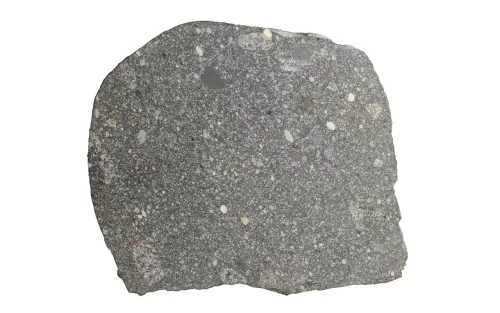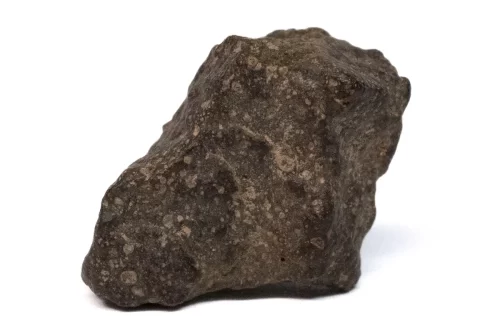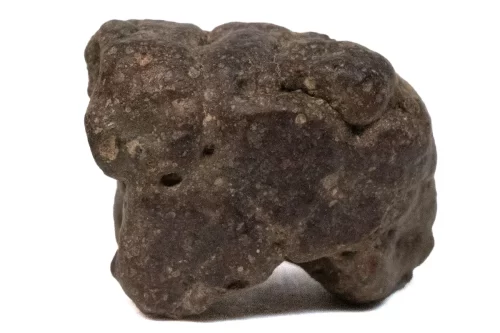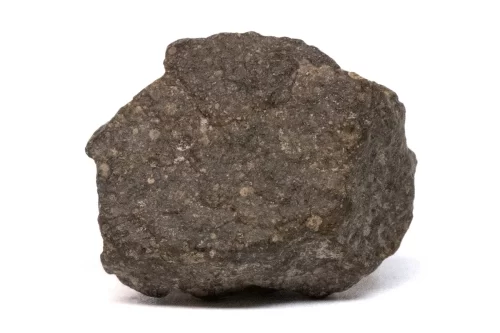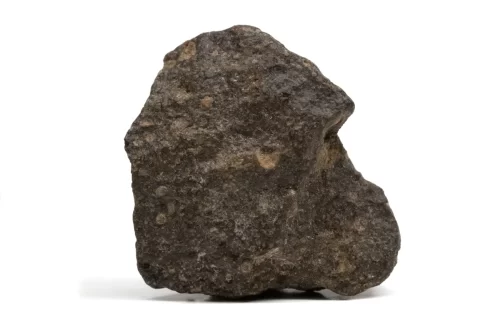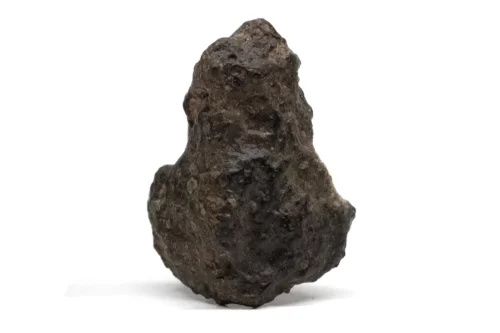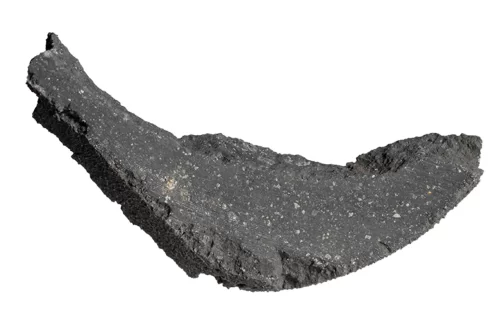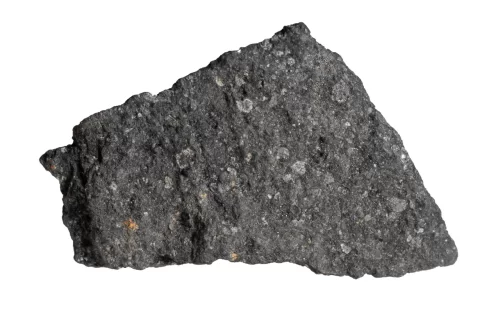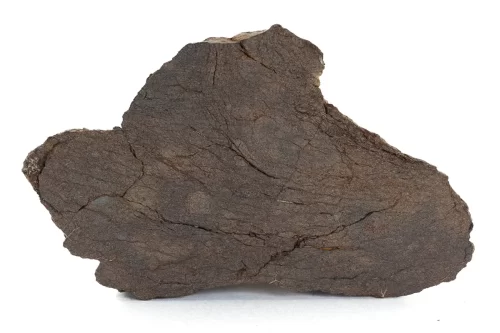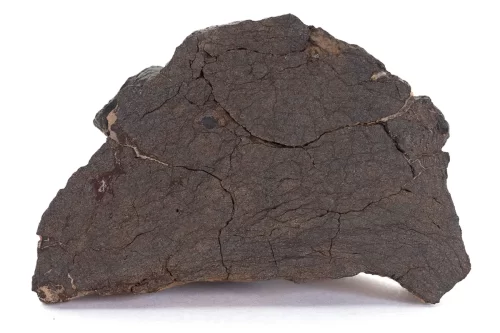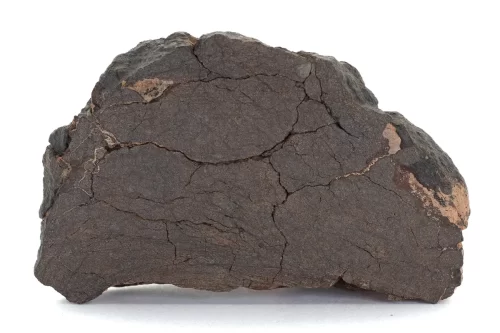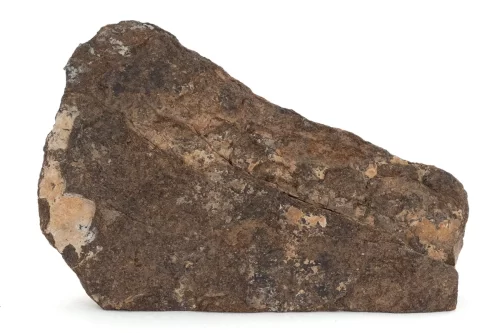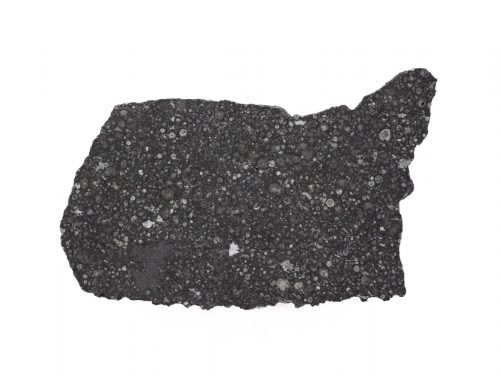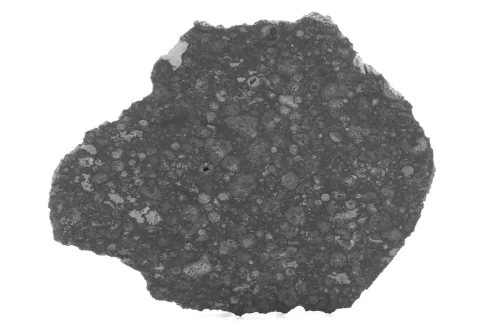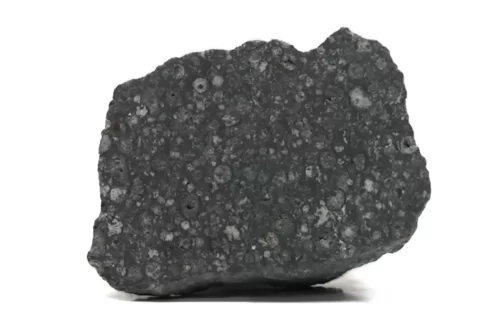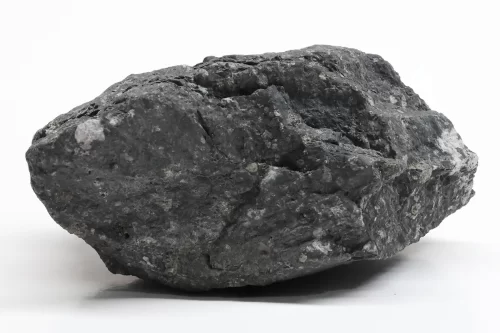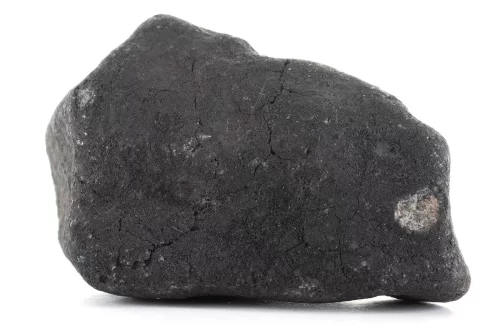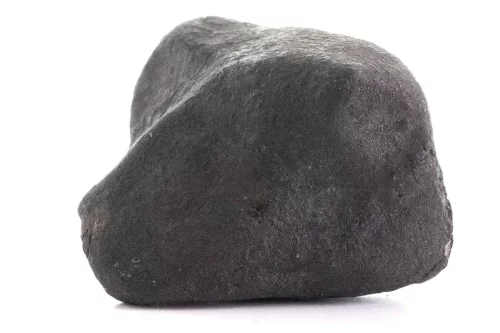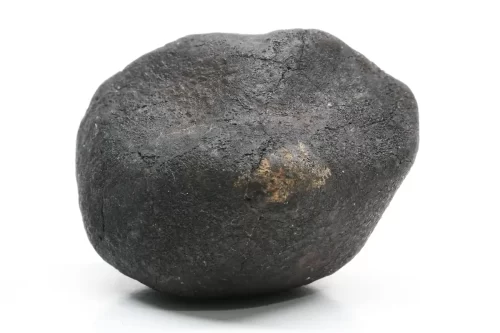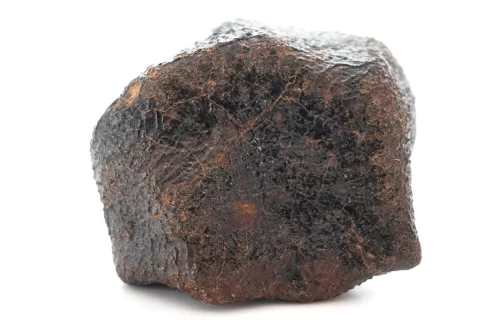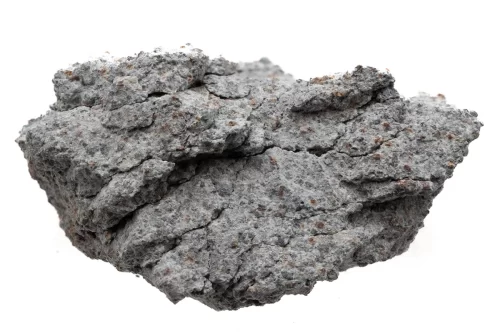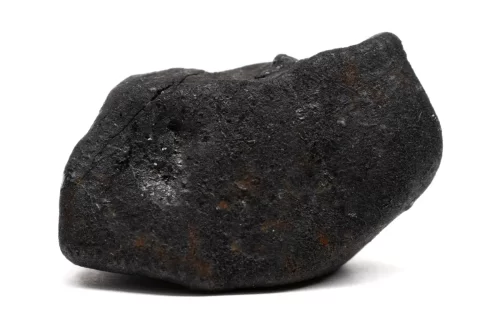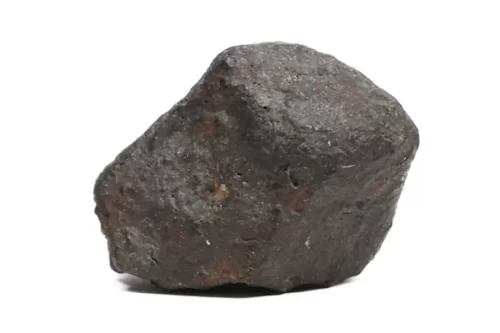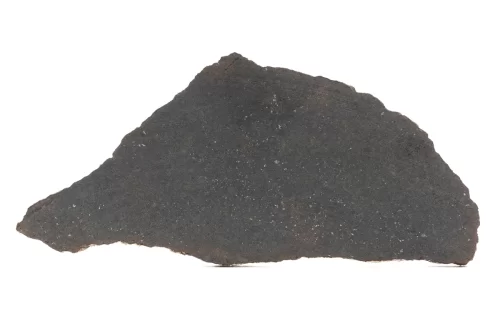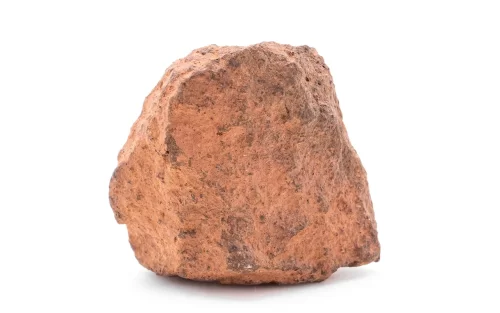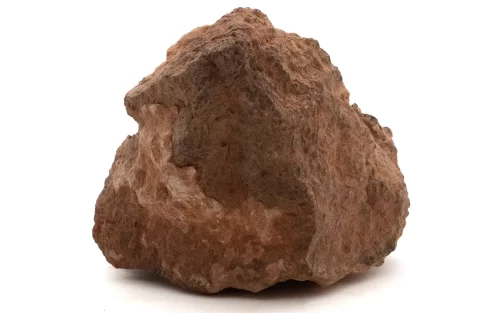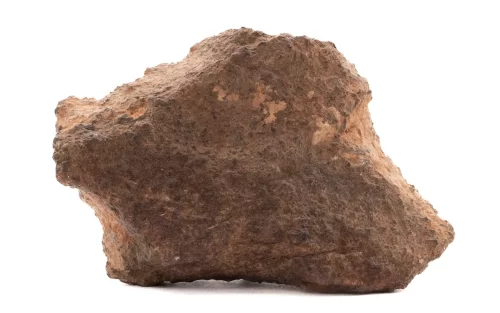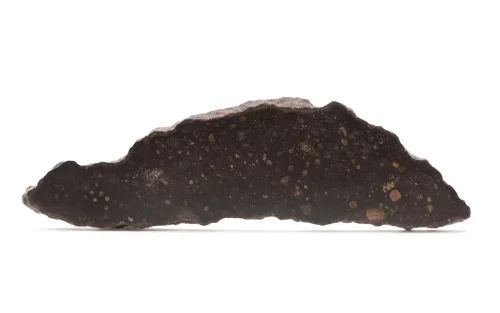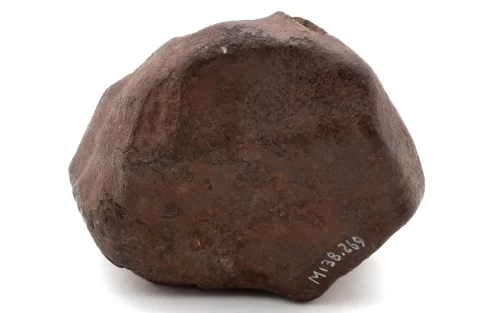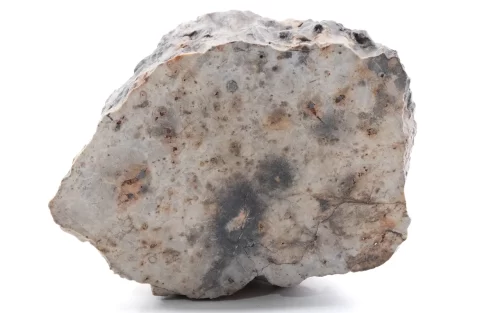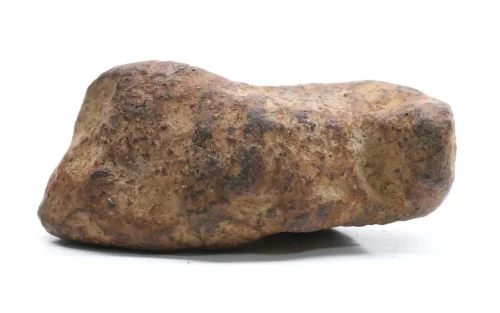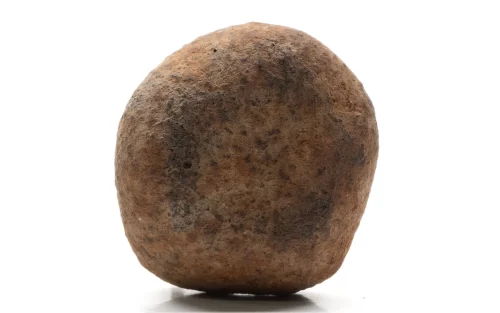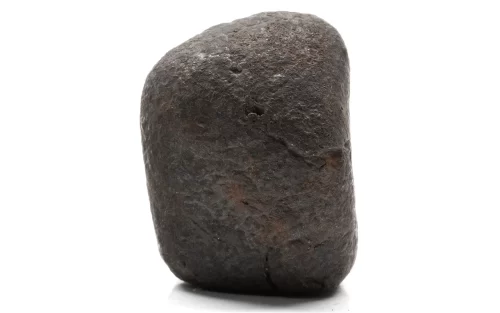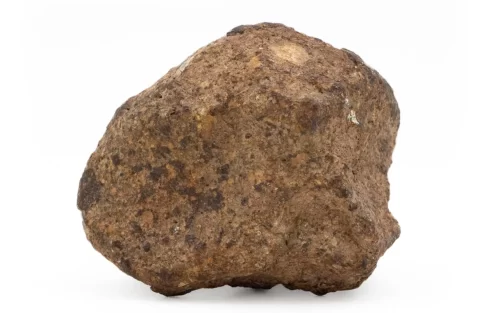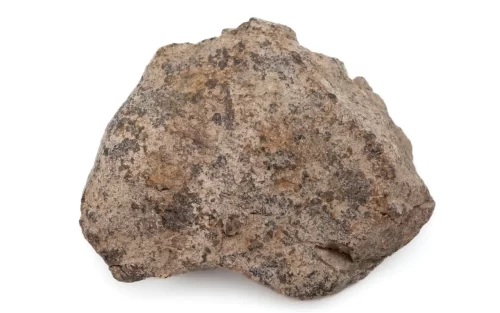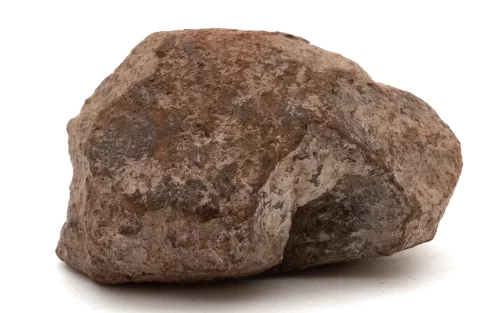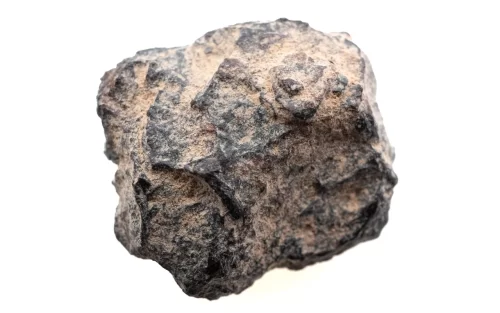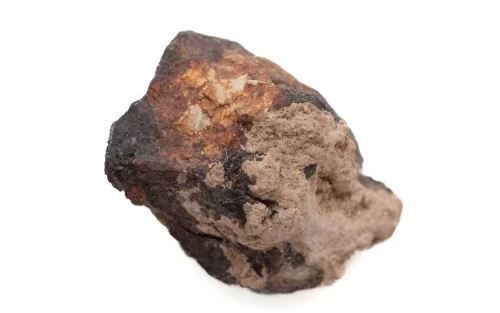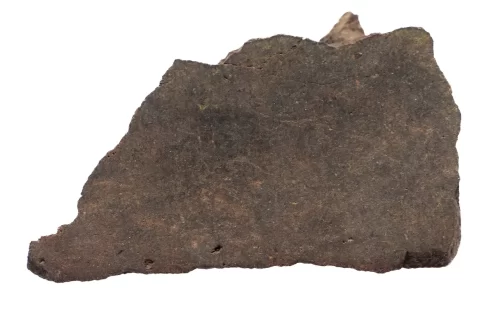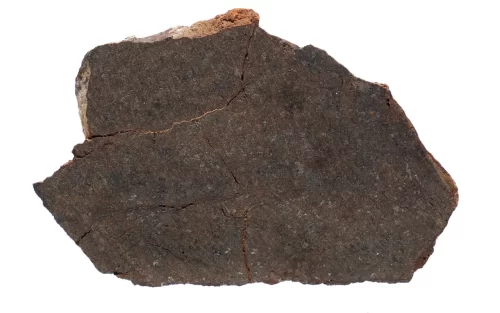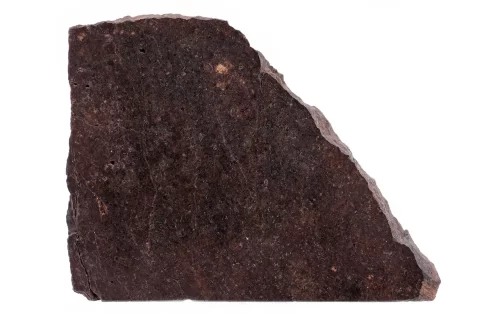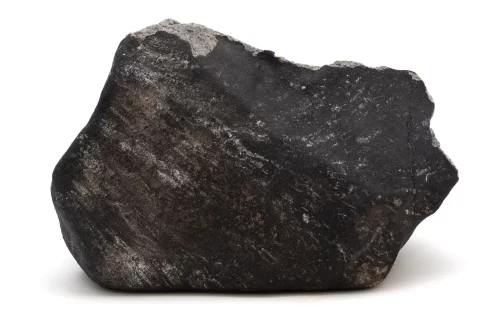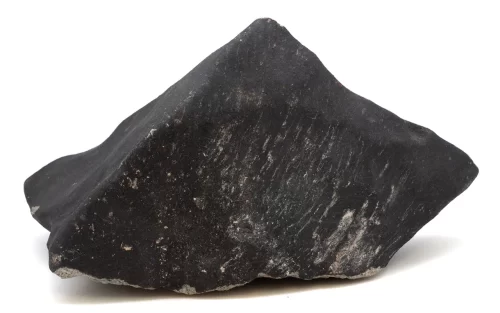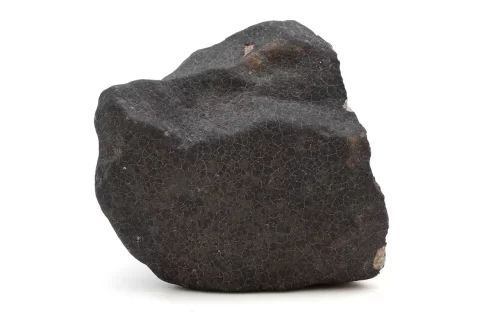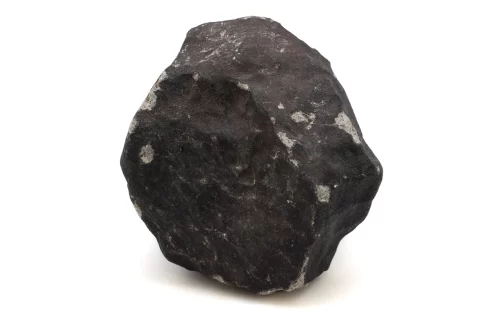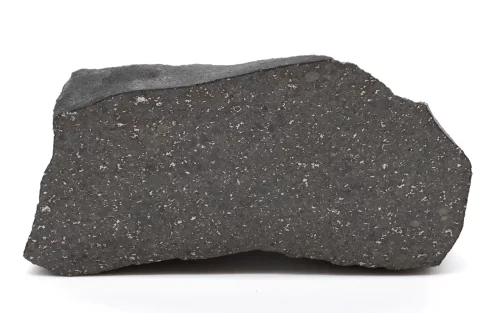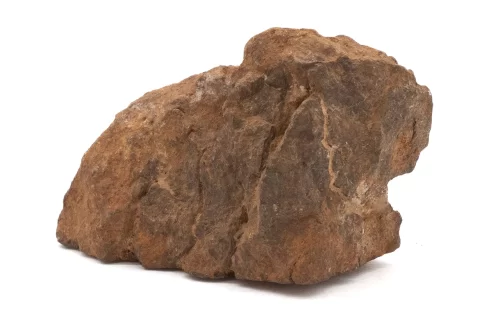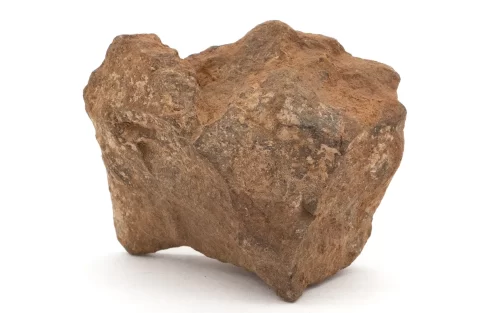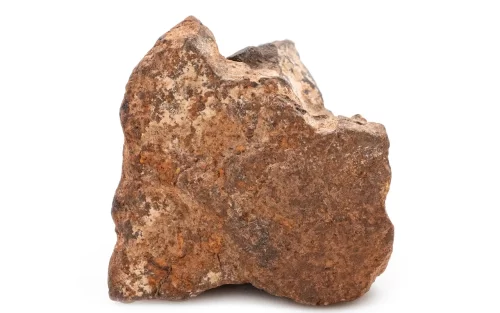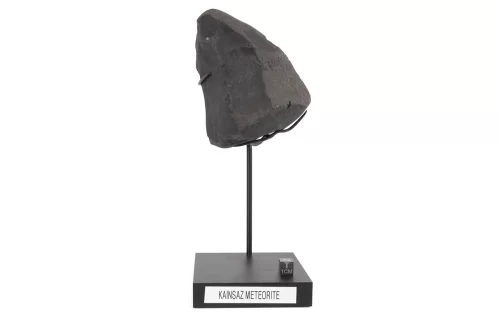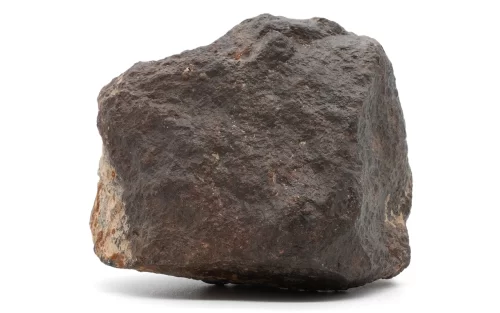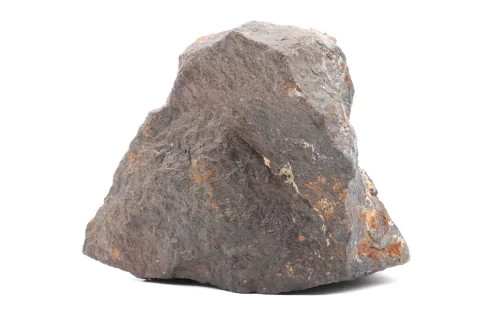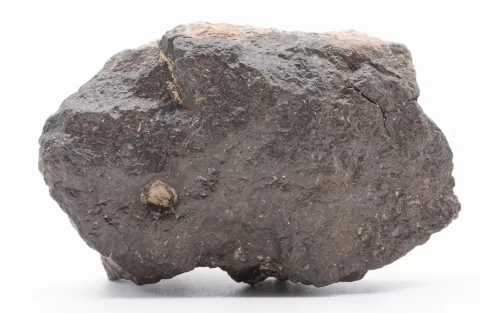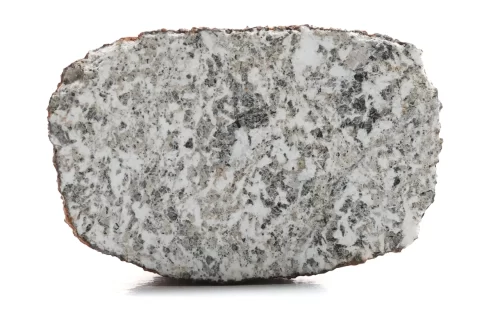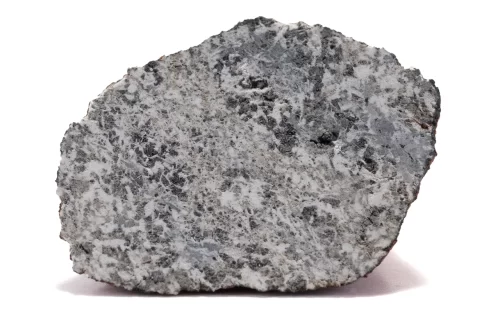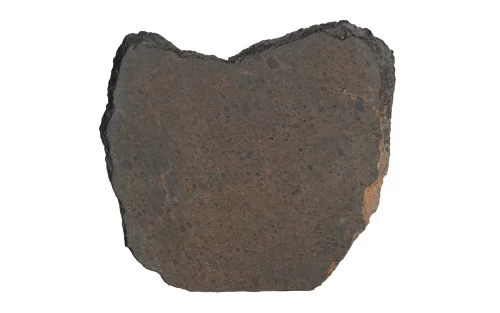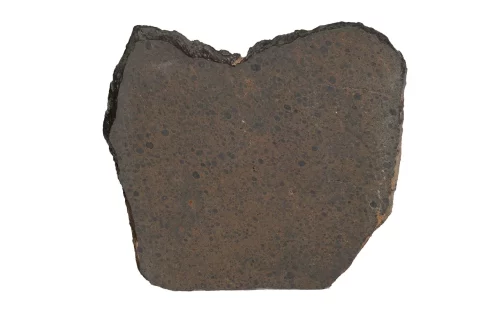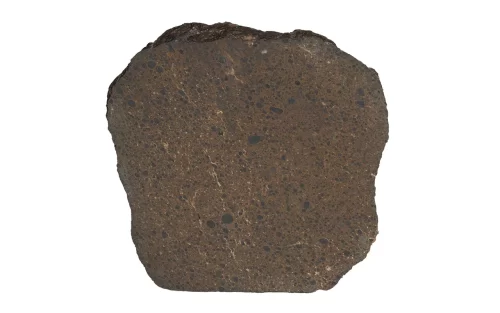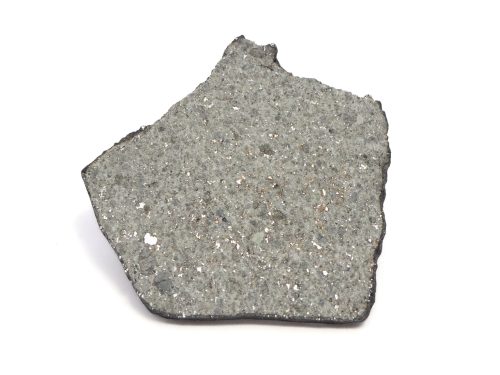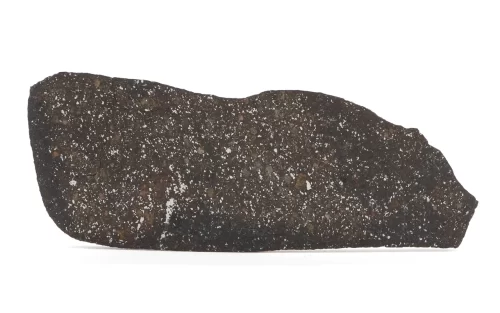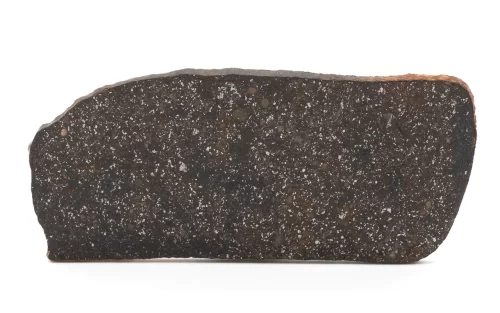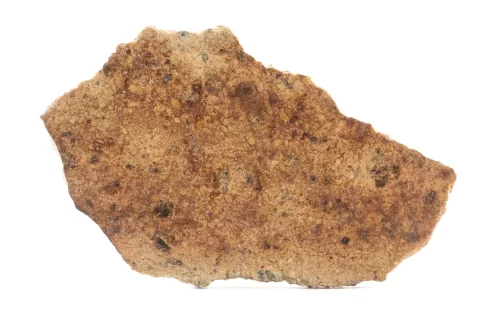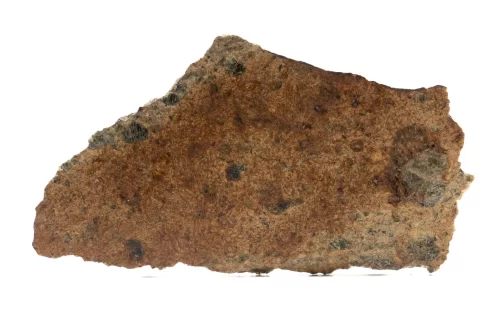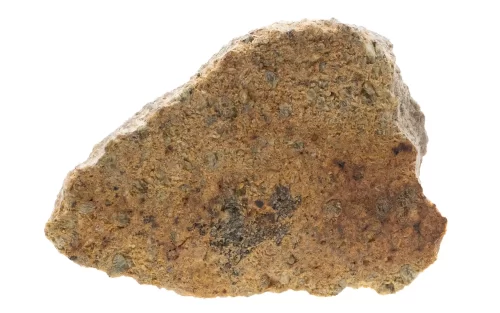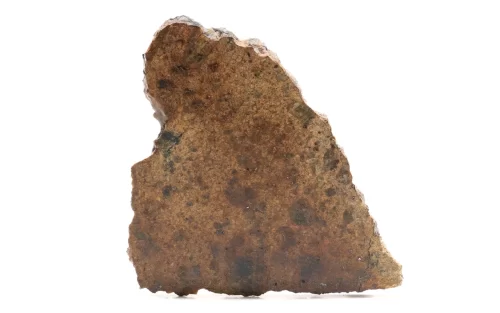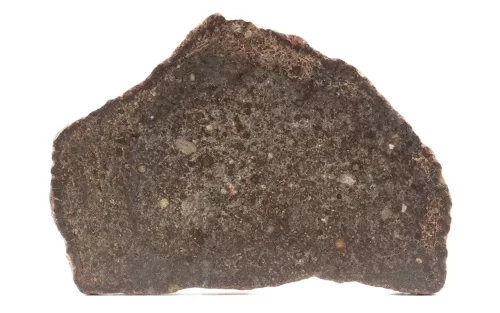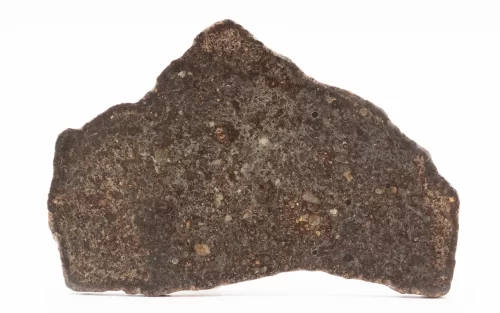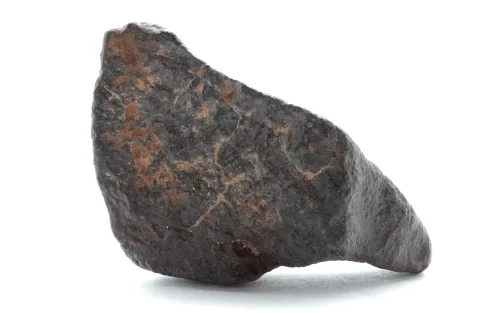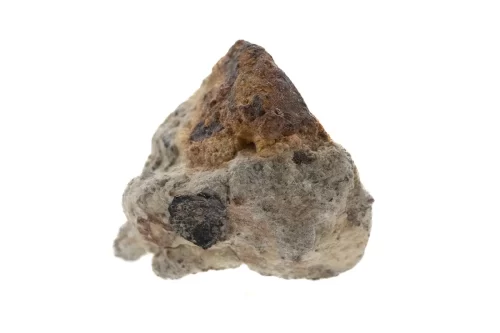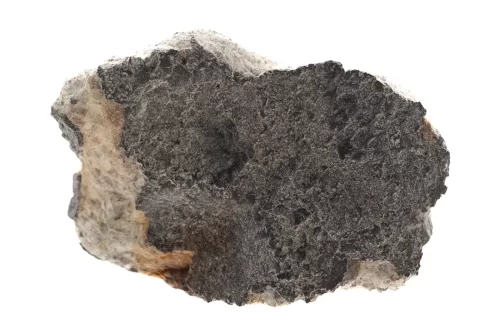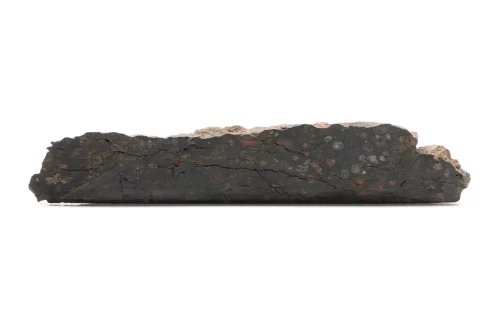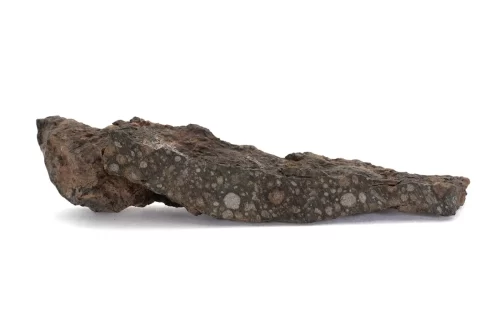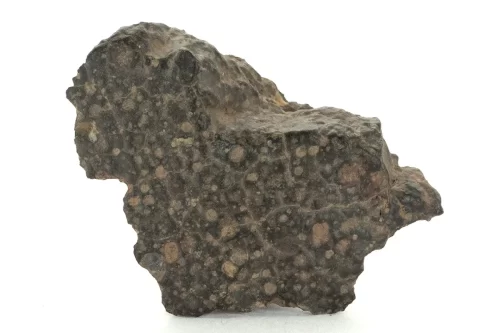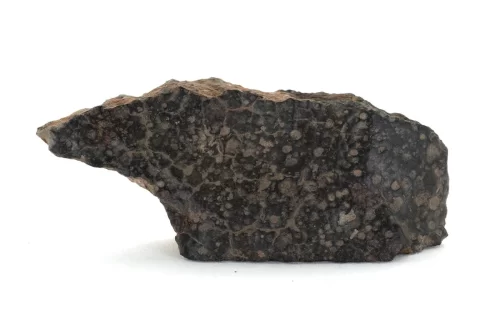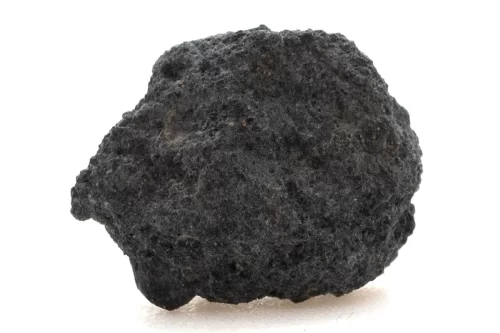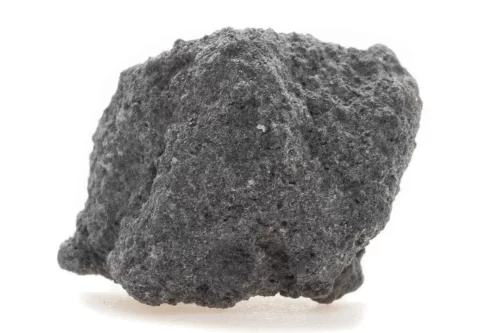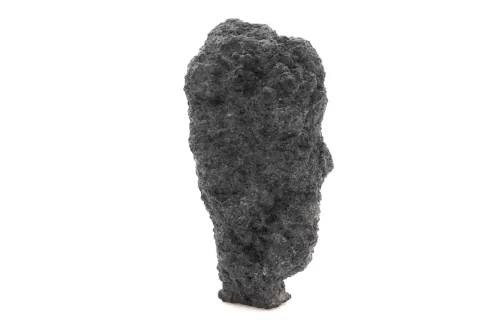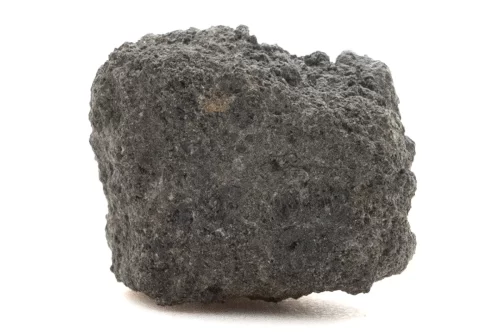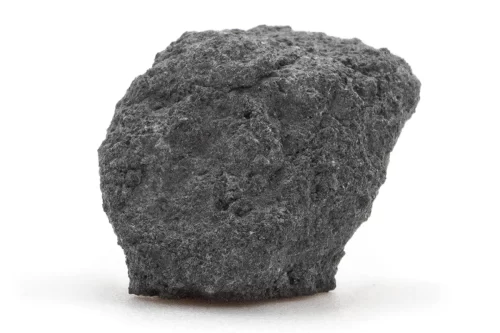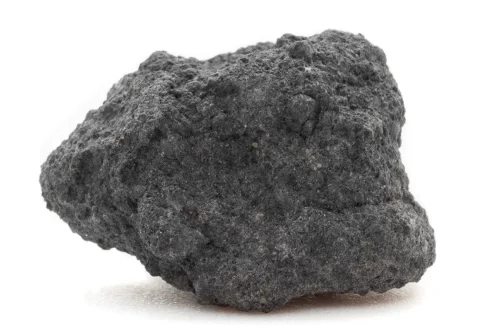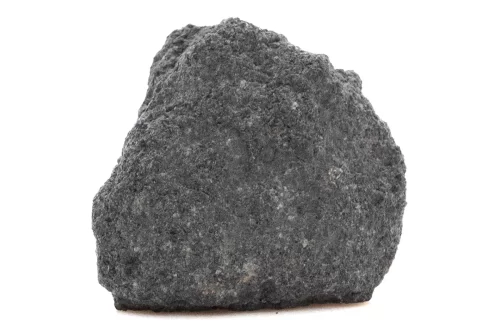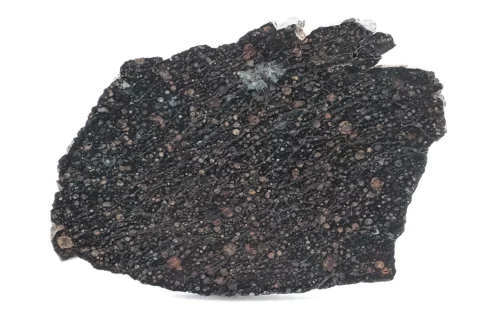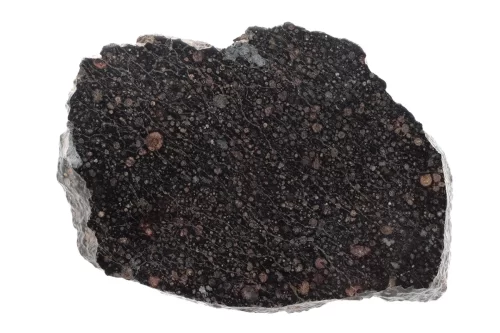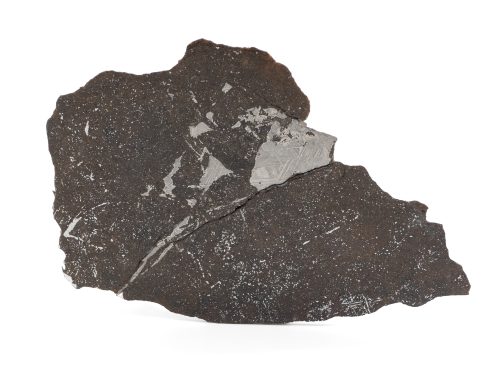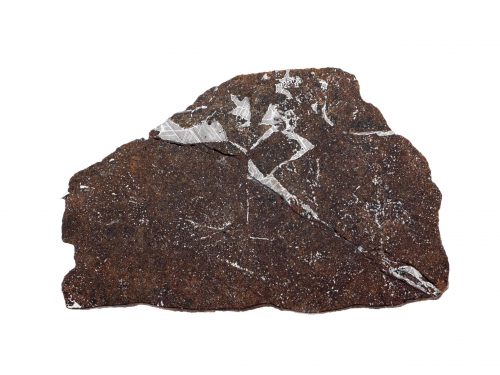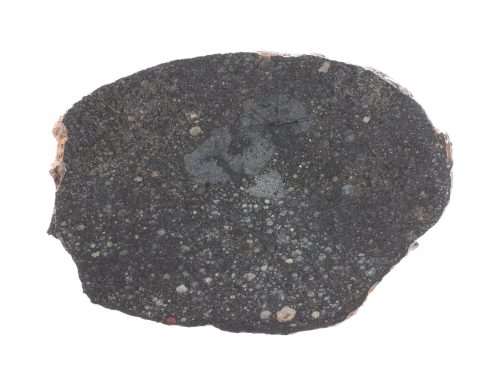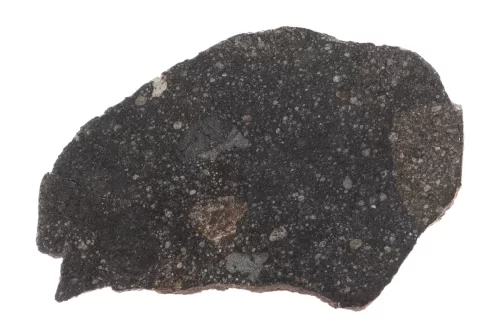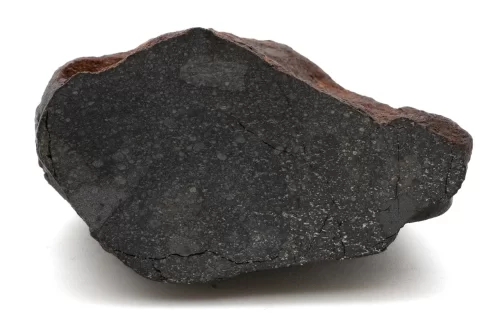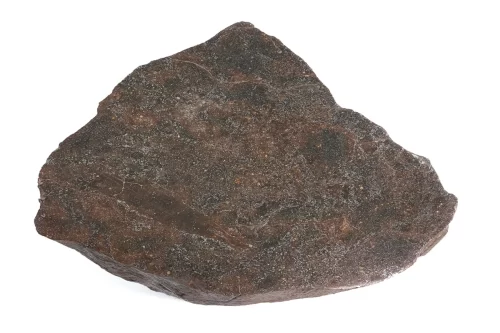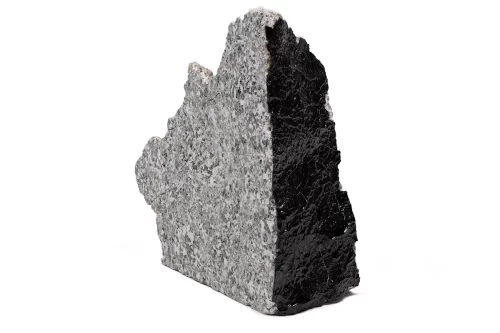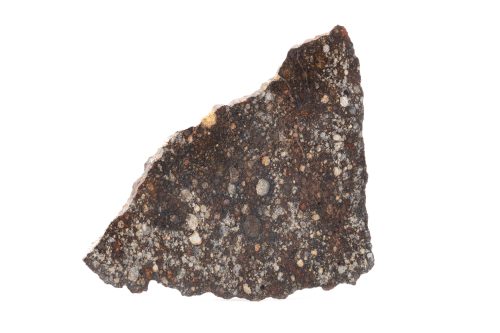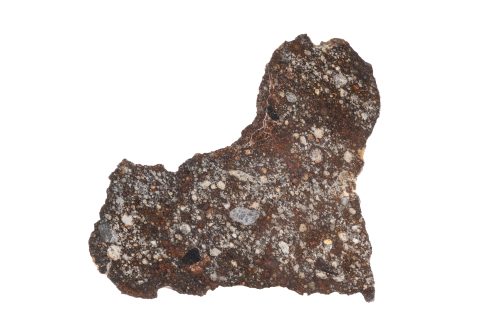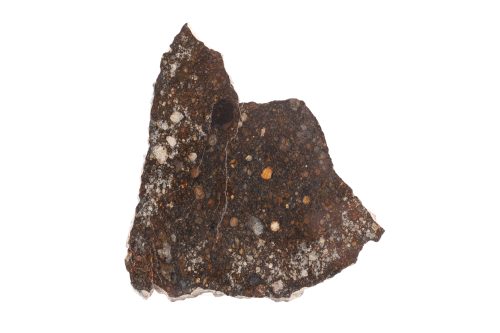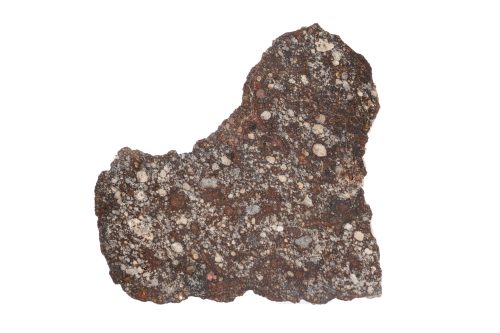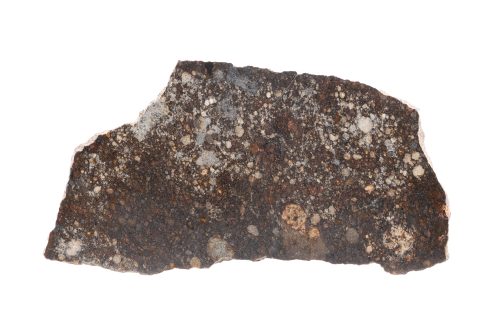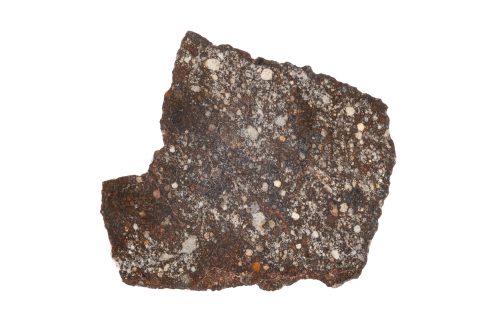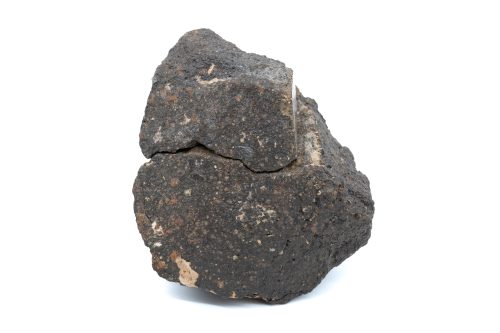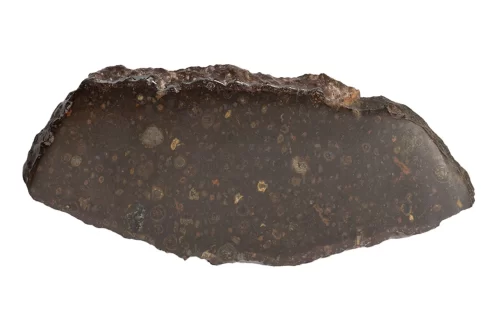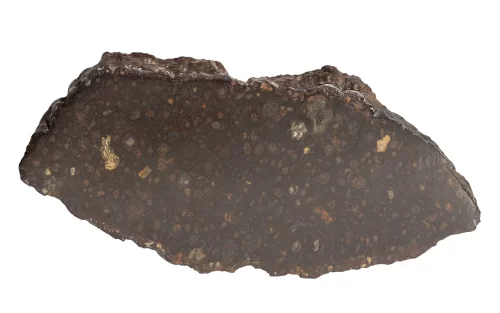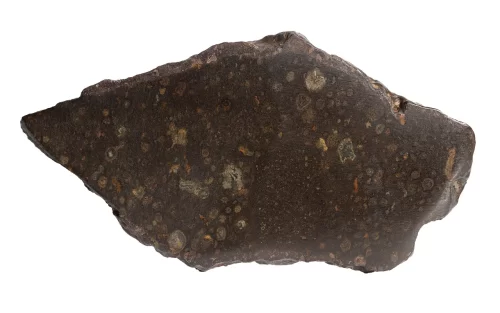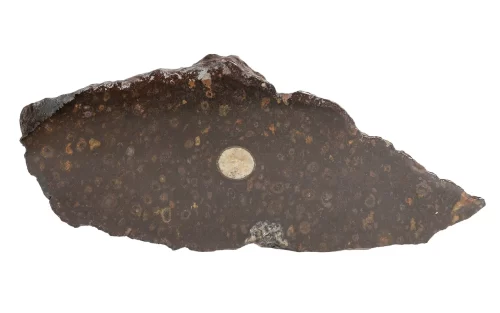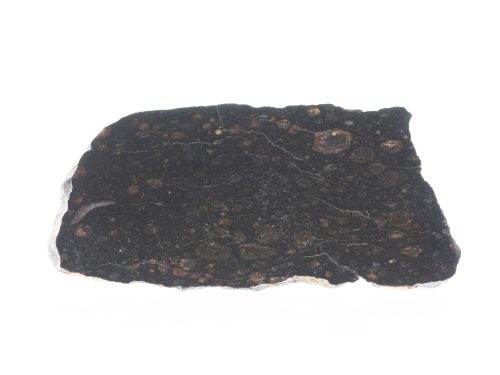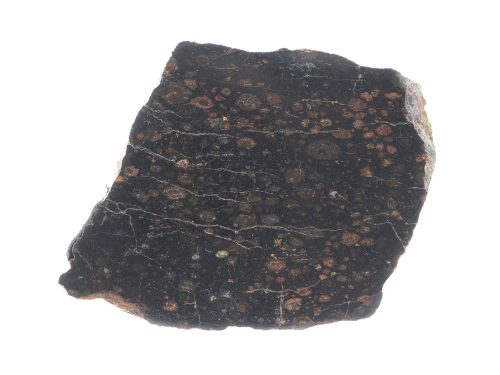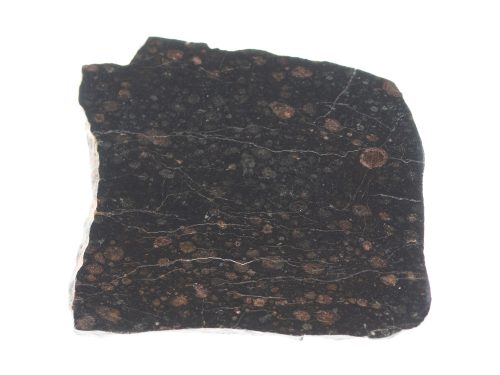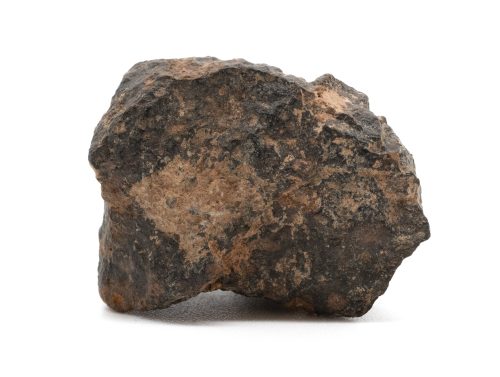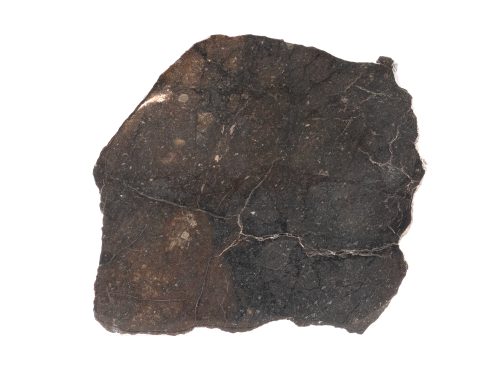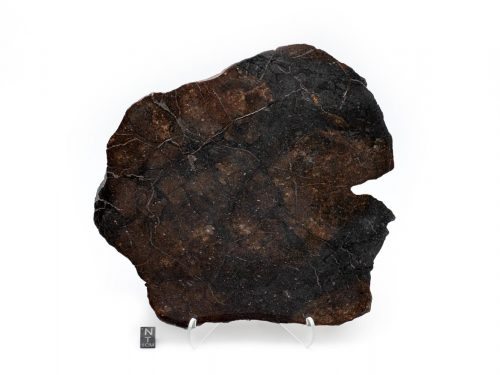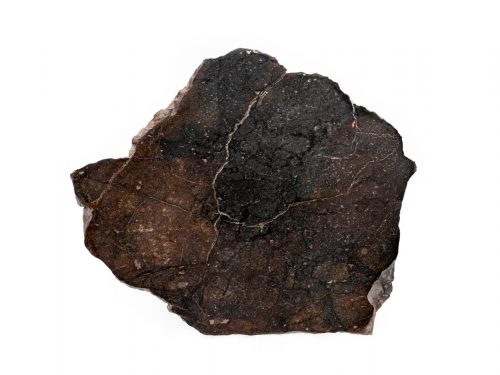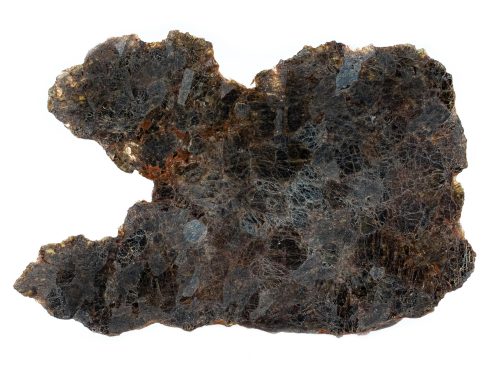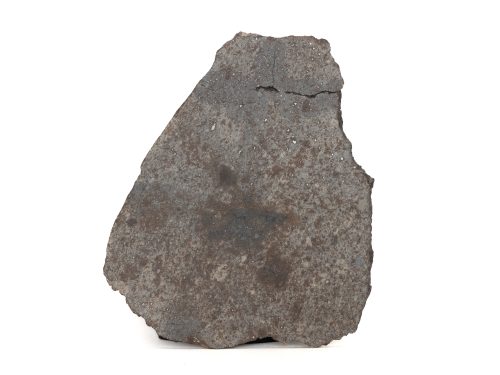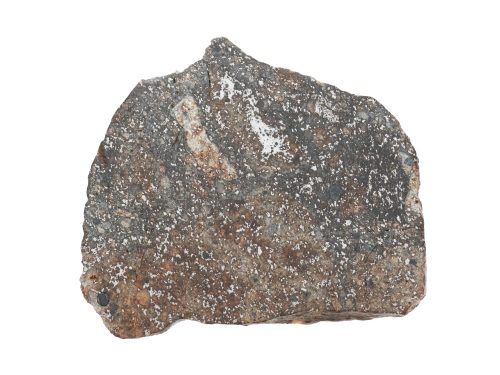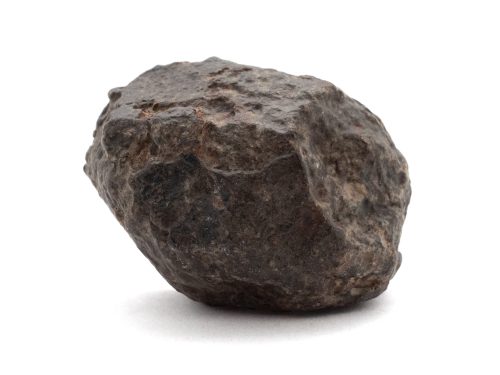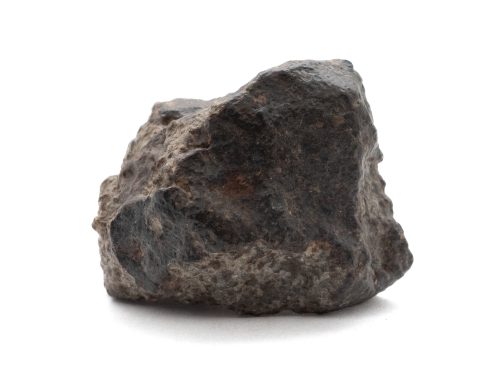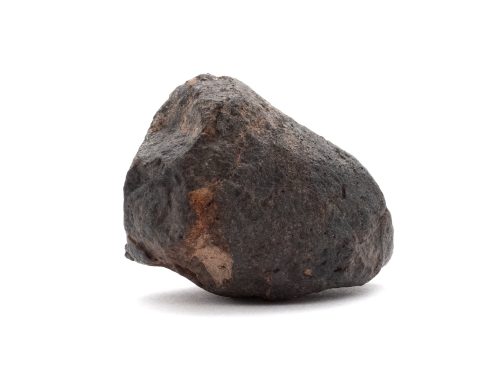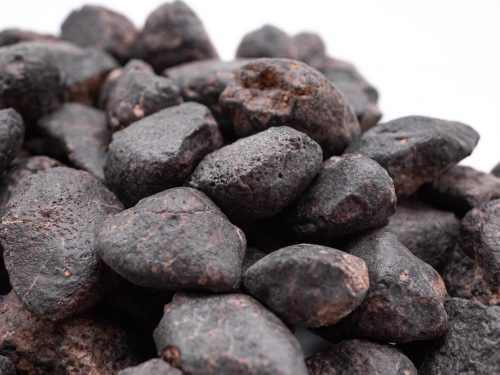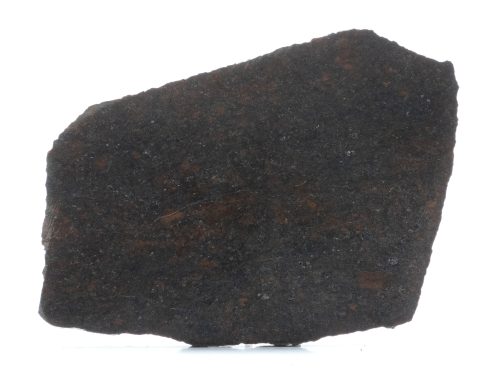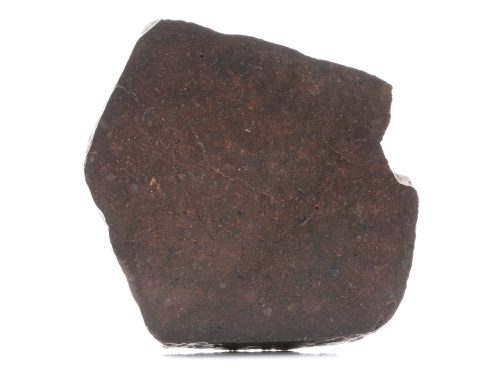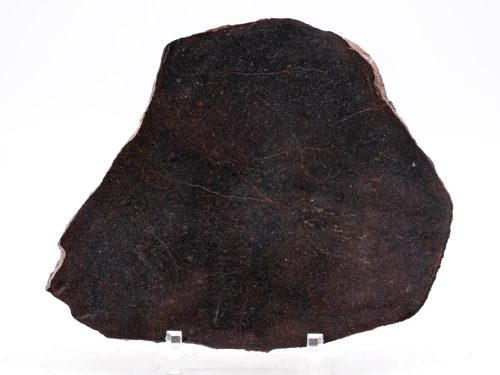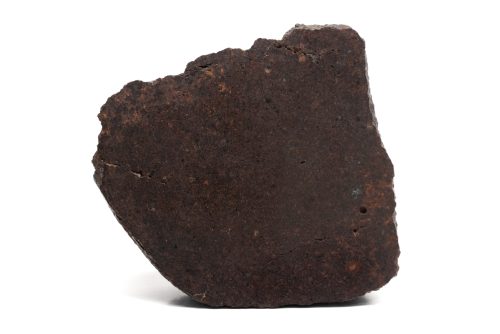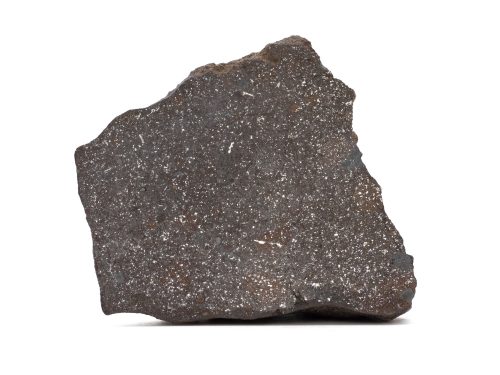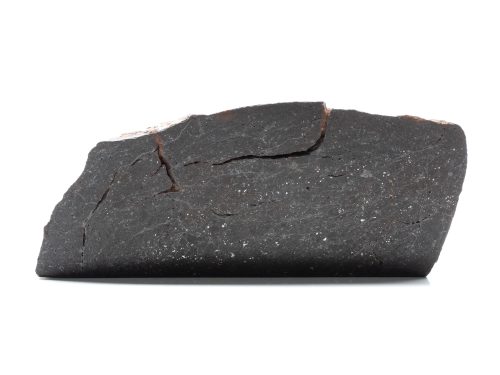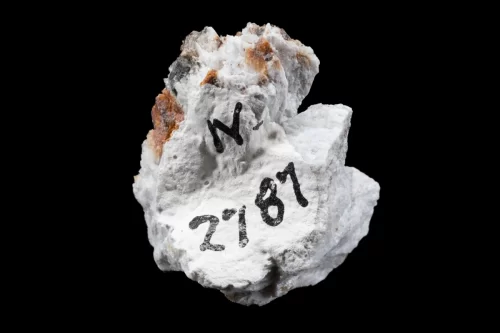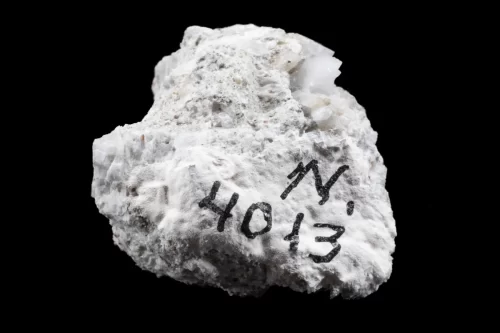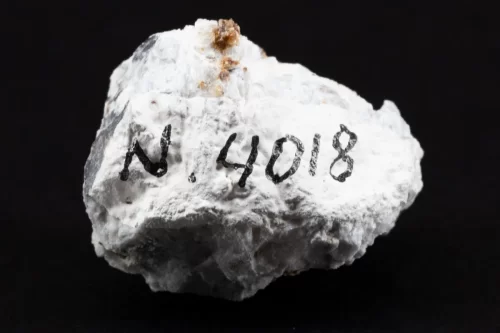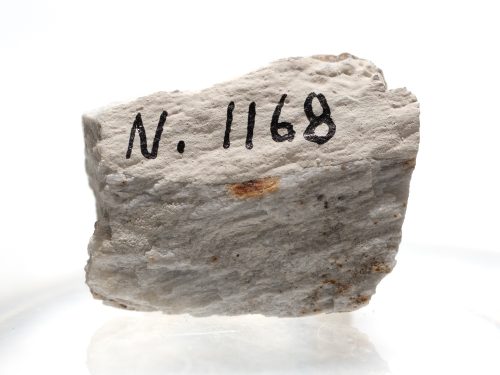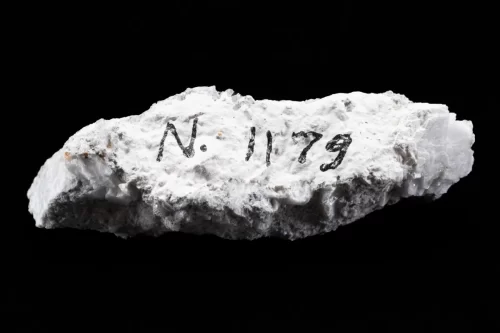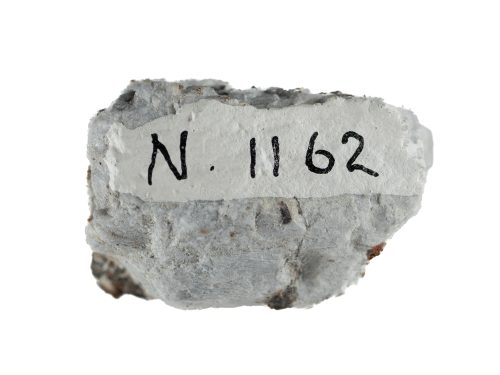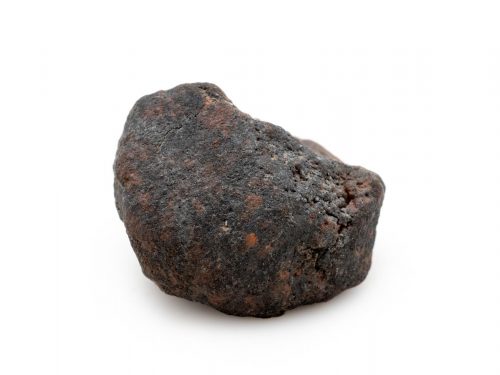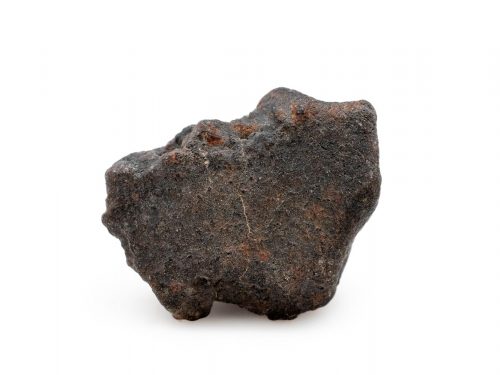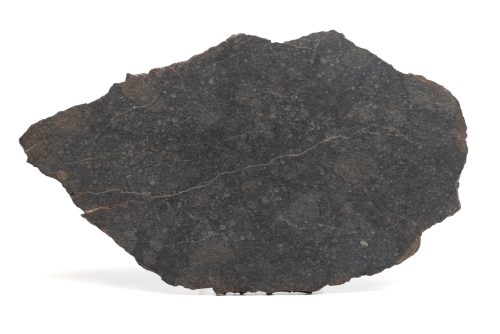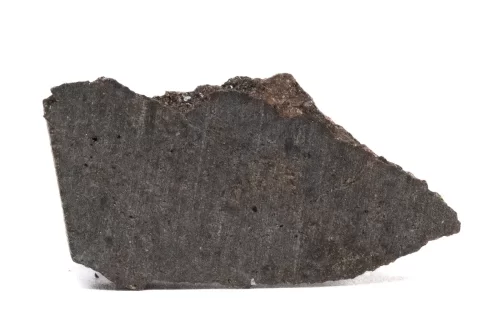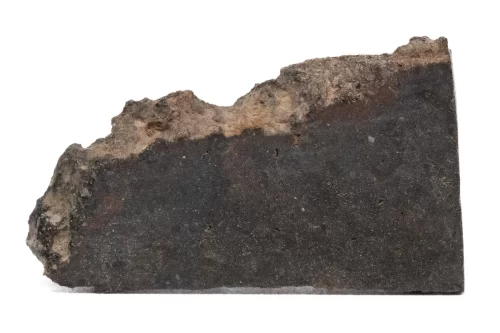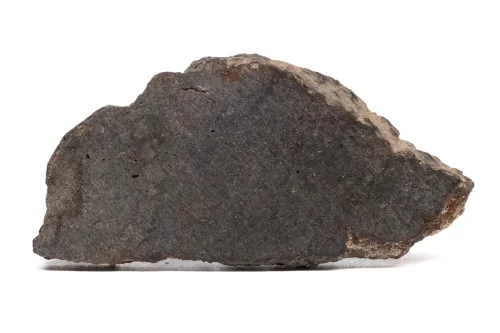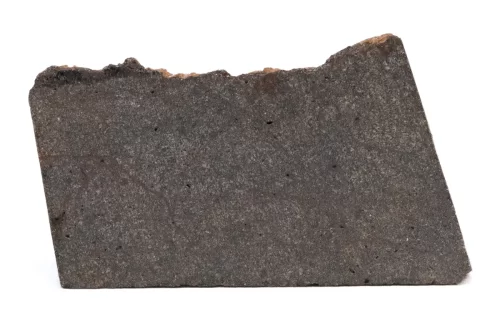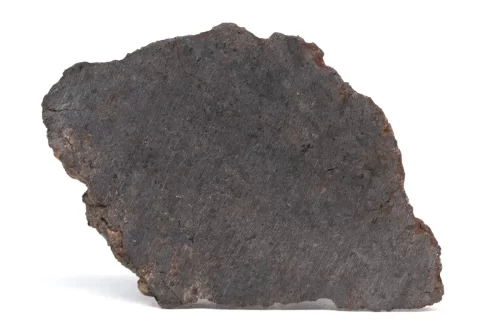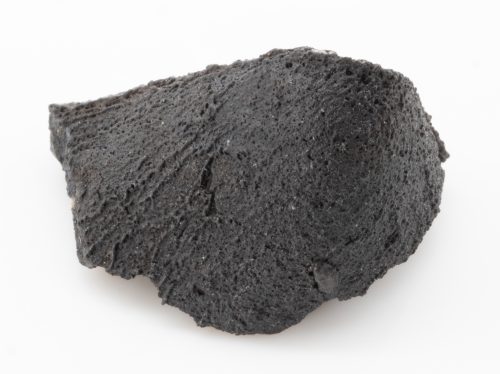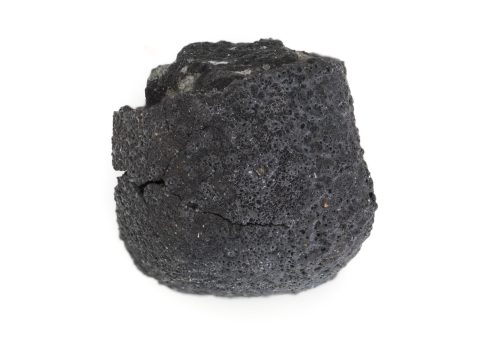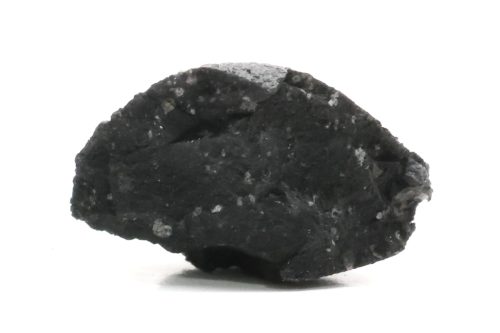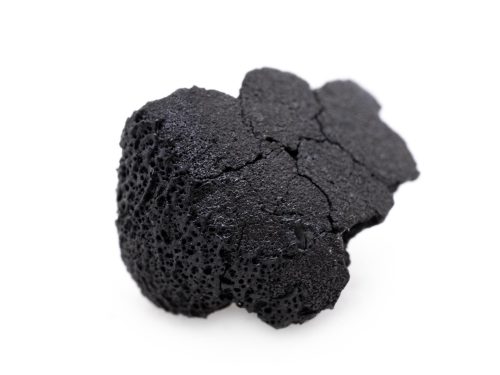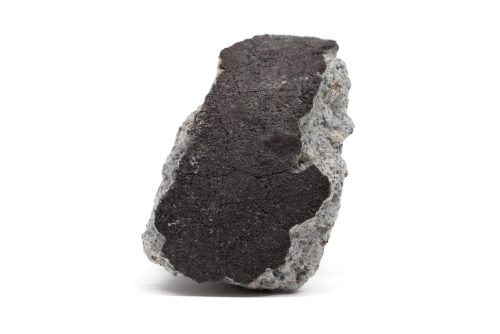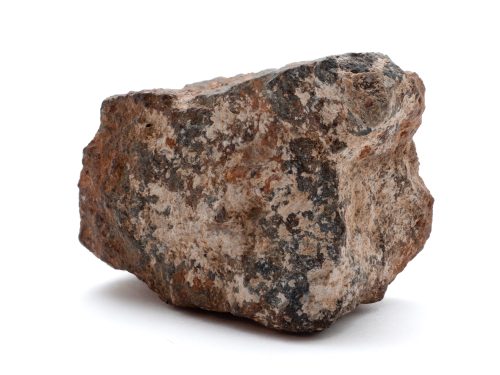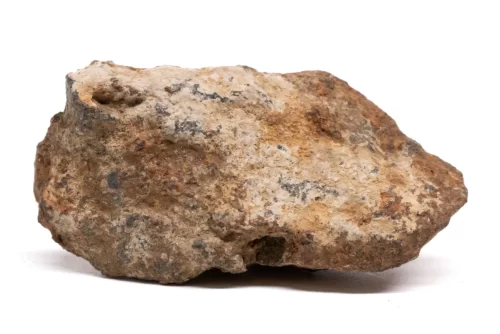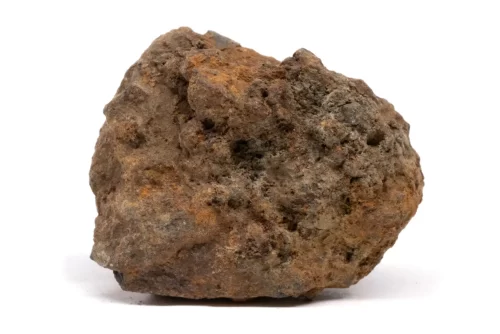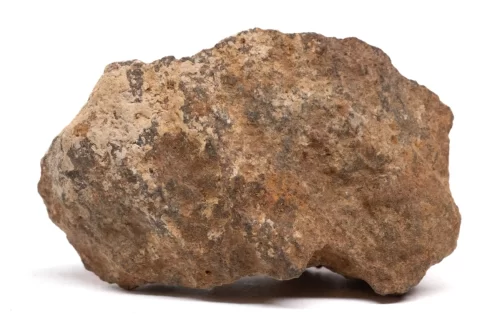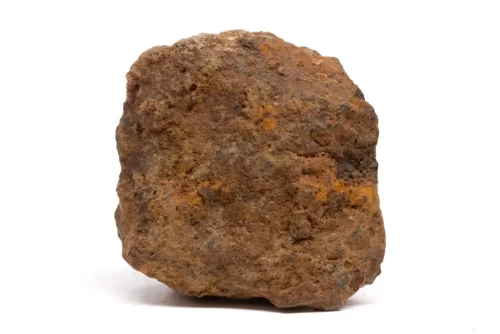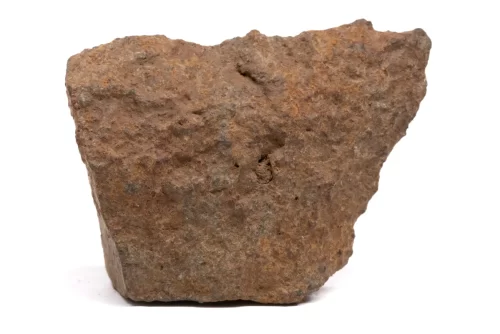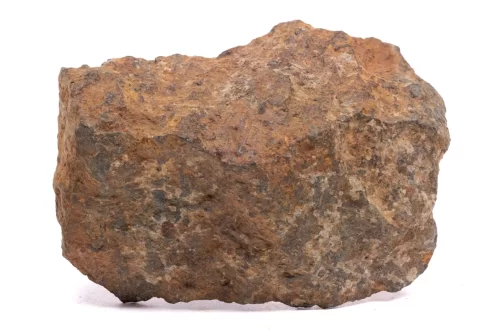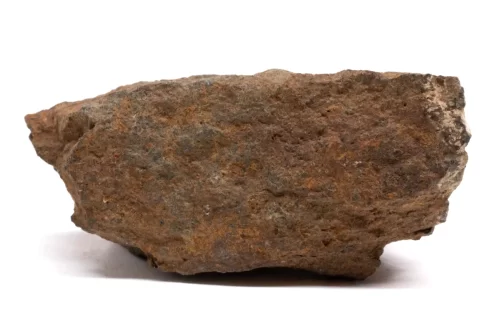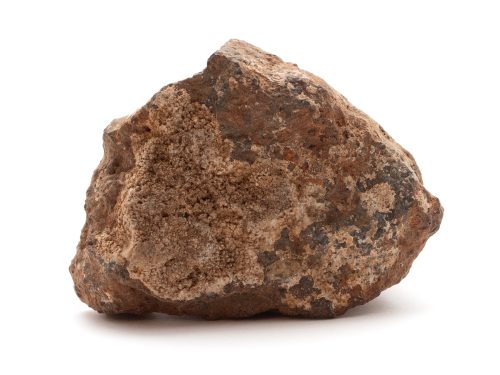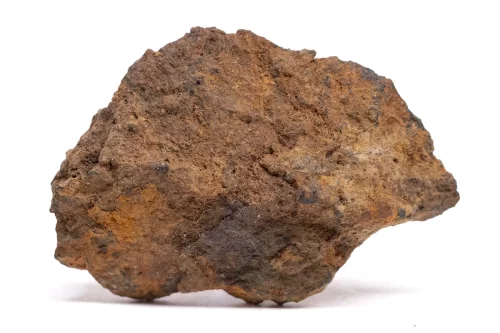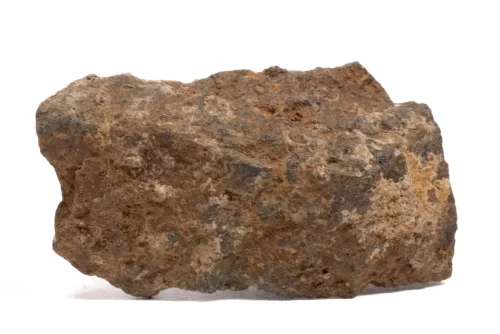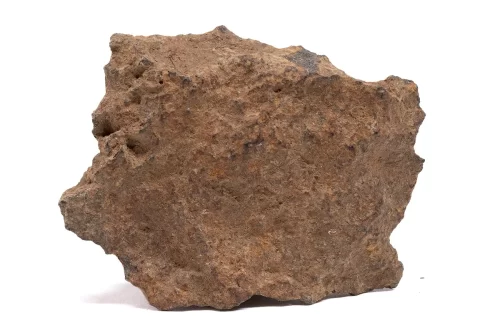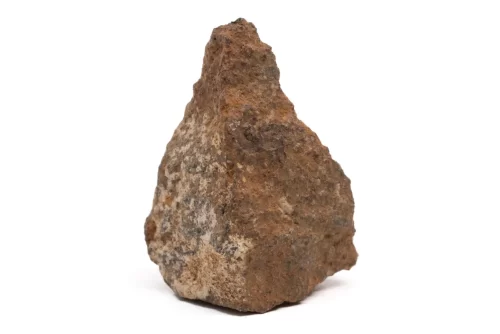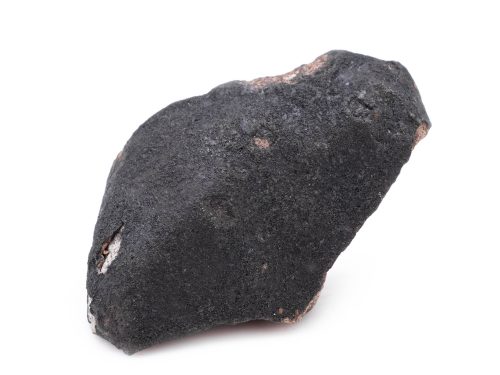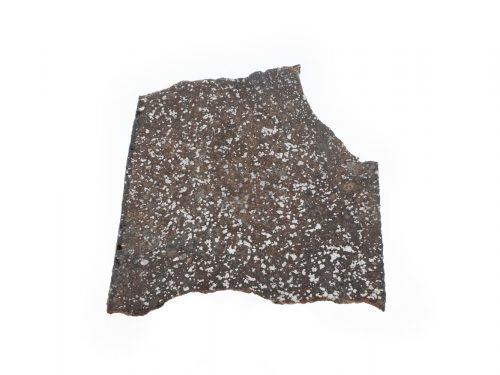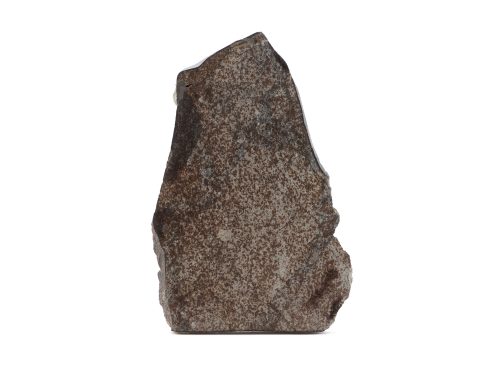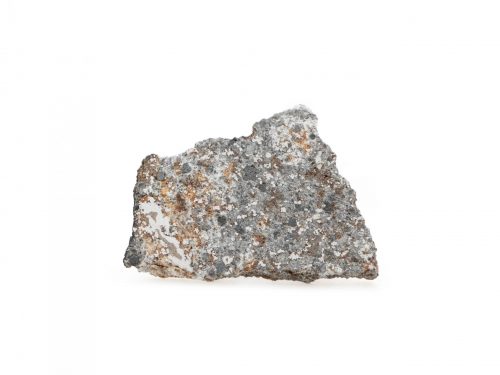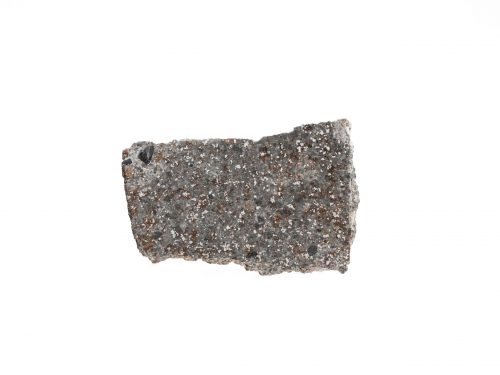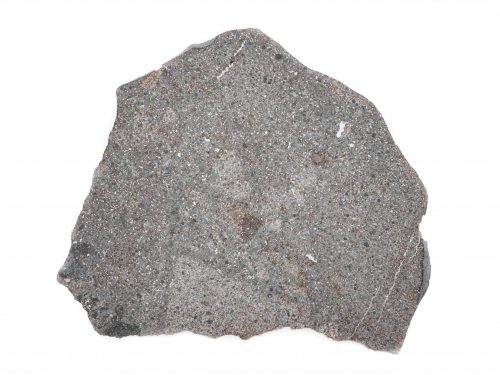Stone Meteorites For Sale
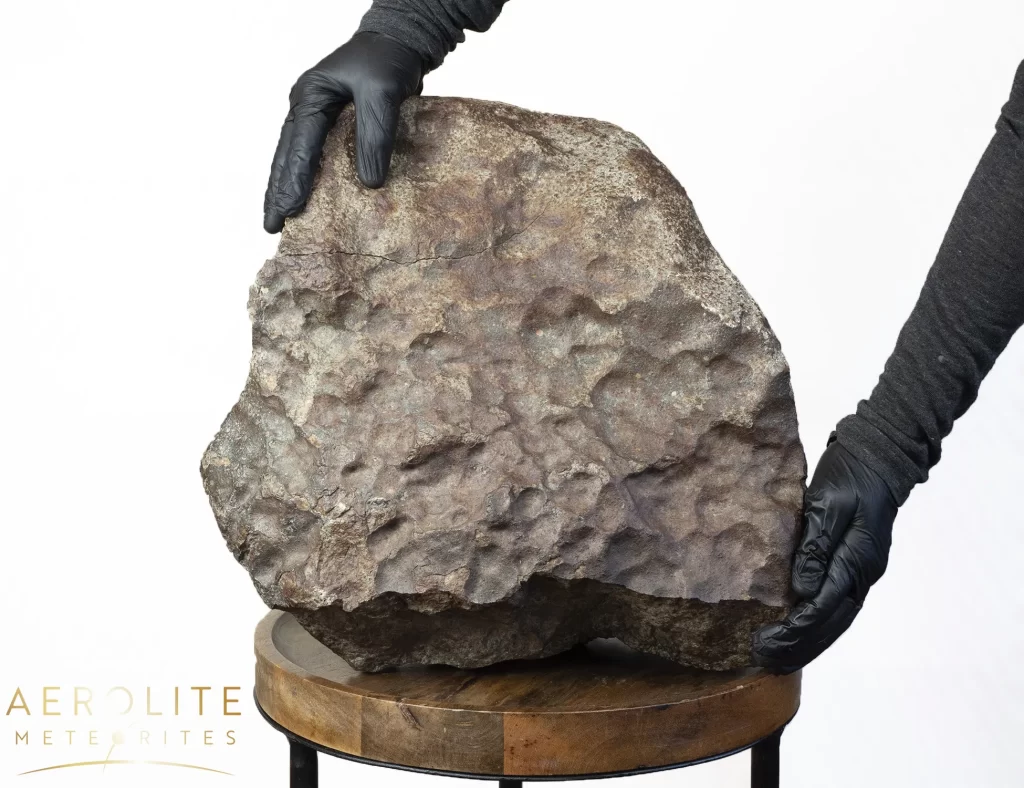
Stones constitute the largest group of meteorites. They originated in the outer crust of a planet or asteroid. Recently-fallen stone meteorites are covered by a thin, black rind known as fusion crust, which forms as the rock’s surface is burned during flight. Fusion crust is fragile and deteriorates easily, so stone meteorites that have been on the surface of our planet for a long time have a similar appearance to Earth rocks. Visible inside most stone meteorites are tiny, glassy, spheres known as chondrules. Forged at the very dawn of the solar system, these chondrules are far older than our own planet. Some stone meteorites, known as carbonaceous chondrites, have been found to contain water, salt, and even amino acids. In the distant past, these meteorites may have carried the very building blocks of life to Earth.
For those looking to buy stone meteorites, our catalog of available pieces is presented here in alphabetical order. Click on any image for additional photographs. All specimens are fully guaranteed and we pride ourselves on outstanding customer service. Please contact us directly with questions.
Explore our wide collection of Stone Meteorites For Sale
Aba Panu Abadla 002 Aguas Zarcas Al Haggounia 001 Allende Bassikounou Bechar 008 Bencubbin Camel Donga Carancas Chelyabinsk Chergach Clarendon (c) Dalgety Downs Dar al Gani (DaG) 521 Dimmitt Djoua 001 Gao-Guenie Gold Basin Grapevine Mesa Hamilton Hammadah al Hamra 346 Homestead Jiddat al Harasis 264 Kainsaz Labenne Sahara Millbillillie Mont Tourniat 002 Mvskoke Merkv Nagjir 001 New Orleans Northwest Africa 10514 | Eucrite Northwest Africa 11174 | H5 Northwest Africa 11342 | Diogenite Northwest Africa 11615 | LL3 Northwest Africa 11700 | H4 Northwest Africa 12217 | Achondrite-ung Northwest Africa 12322 | CV3 Northwest Africa 12925 | CK5 Northwest Africa 12932 | Unbrecciated Eucrite Northwest Africa 13279 | CV3 Northwest Africa 13758 | R3 Northwest Africa 13917 | Winonaite Northwest Africa 14613 | H5 Northwest Africa 15468 | OC4-melt breccia Northwest Africa 15662 | LL3 Northwest Africa 16094 | Eucrite Northwest Africa 16181 | LL3 Northwest Africa 16242 | CV3 Northwest Africa 16976 | CK6 Northwest Africa 4502 | CV3 Northwest Africa 7454 | CV3 Northwest Africa 7457 | L5-melt breccia Northwest Africa 7831 | Diogenite Northwest Africa 869 | L3-6 Northwest Africa XXX | Unclassified Stones Norton County Nuevo Mercurio NWA 10102 Punggur Rafsa 005 Sidi El Habib 001 Tank Mountains Tarda Tassédet 004 Thika Tsarev Viñales Zag Zhob-
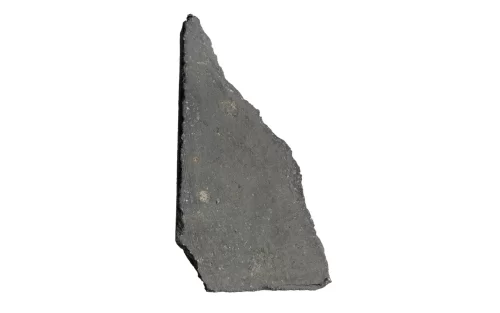
Aguas Zarcas 0.37g
$46.00 Add to cart -
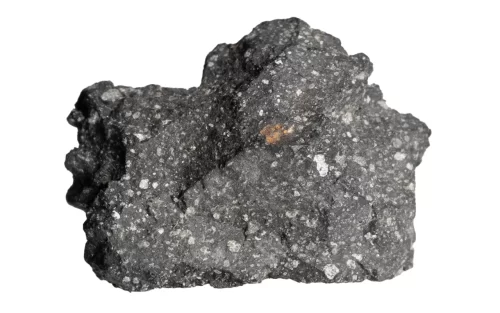
Aguas Zarcas 0.63g
$79.00 Add to cart -
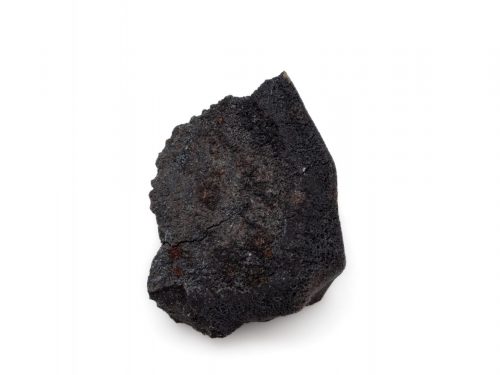
Aguas Zarcas 30.1g
$3,750.00 Add to cart -

Aguas Zarcas 6.6g
$825.00 Add to cart -
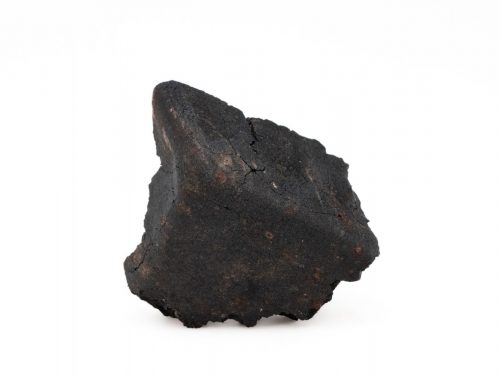
Aguas Zarcas 85.0g
$10,625.00 Add to cart -
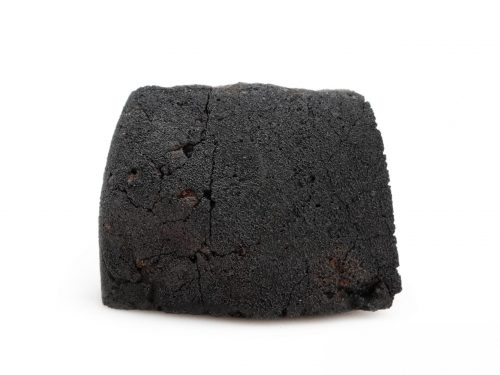
Aguas Zarcas 13.0g
$1,625.00 Add to cart -
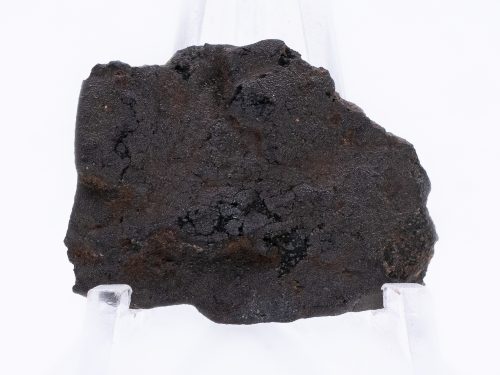
Aguas Zarcas 3.6g
$545.00 Add to cart -

Aguas Zarcas 6.3g
$945.00 Add to cart
Allende Slices
At approximately 4 am on the morning of October 16, 2006 a shower of stones fell in and around the village of Bassikounou in the southeast corner of Mauritania, near the border with Mali. Many stones, including this one, were picked up very shortly after the fall in a 8 km strewnfield, and as a result the pristine black fusion crust has been perfectly preserved.
-

Bechar 008 23.7g
$356.00 Add to cart -
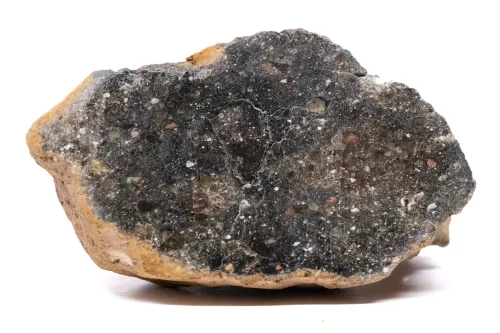
Bechar 008 29.6g
$444.00 Add to cart -

Bechar 008 31.1g
$395.00 Add to cart -

Bechar 008 32.1g
$409.00 Add to cart -

Bechar 008 32.7g
$415.00 Add to cart -
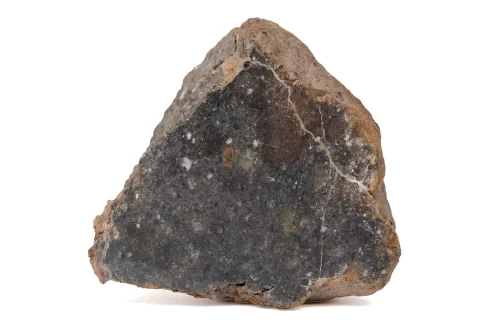
Bechar 008 33.6g
$425.00 Add to cart -
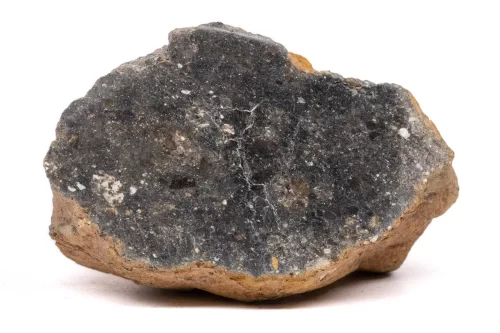
Bechar 008 37.5g
$478.00 Add to cart -
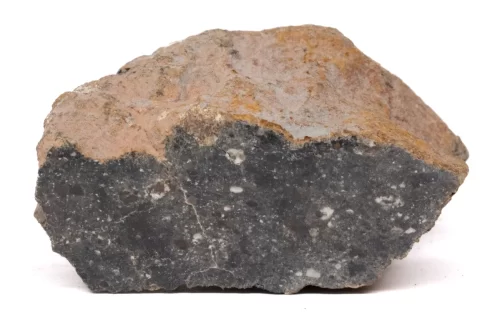
Bechar 008 38.7g
$494.00 Add to cart -
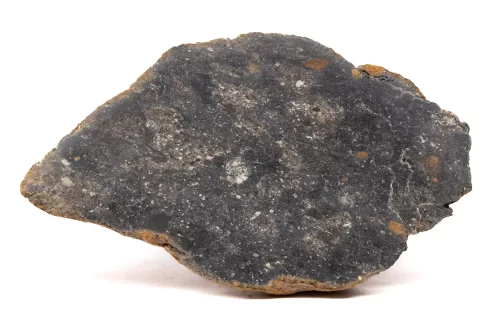
Bechar 008 56.3g
$717.00 Add to cart -
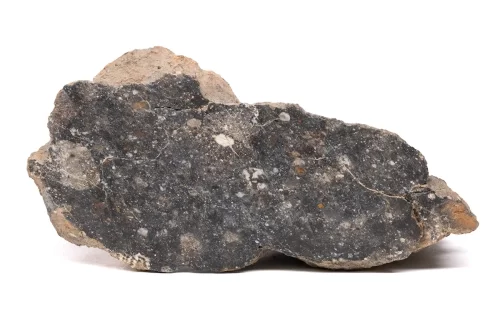
Bechar 008 88.2g
$1,125.00 Add to cart -
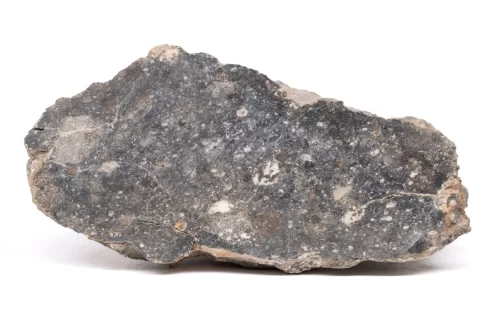
Bechar 008 89.8g
$1,145.00 Add to cart -
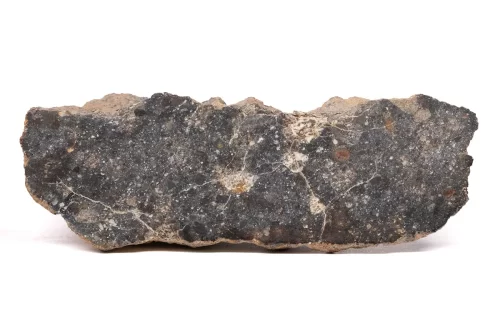
Bechar 008 93.8g
$1,145.00 Add to cart
Chelyabinsk Individuals
Gao-Guenie Individuals
Gold Basin Slices
-
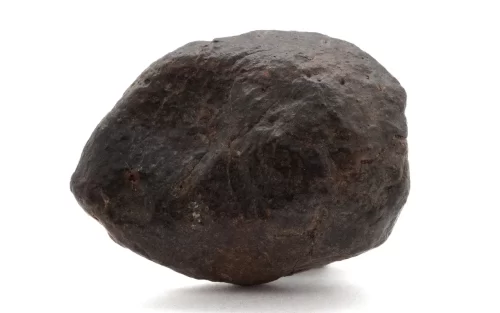
NWA 11700 14.5g
$29.00 Add to cart -

NWA 11700 19.7g
$39.00 Add to cart -
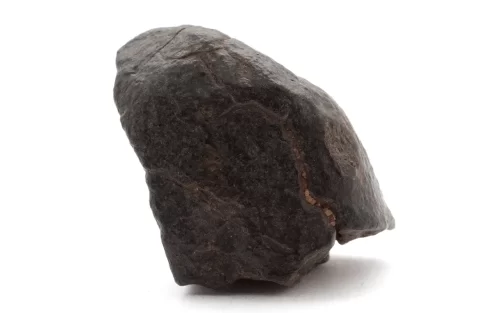
NWA 11700 19.9g
$40.00 Add to cart -
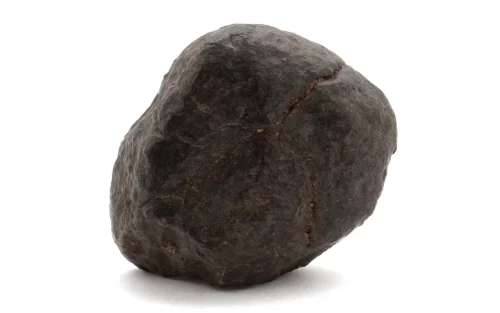
NWA 11700 21.2g
$42.00 Add to cart -

NWA 11700 21.3g
$43.00 Add to cart -

NWA 11700 21.8g
$44.00 Add to cart -
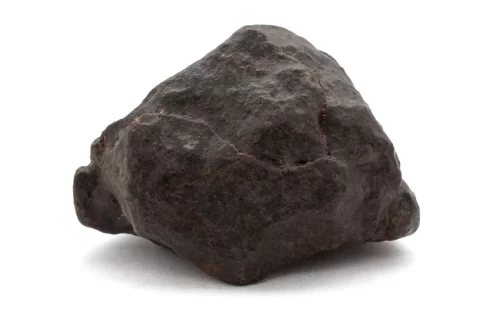
NWA 11700 26.5g
$53.00 Add to cart -
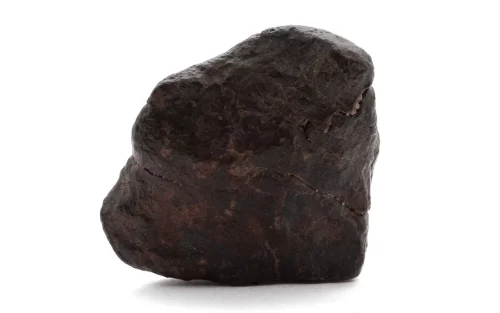
NWA 11700 38.0g
$76.00 Add to cart -

NWA 11700 46.1g
$92.00 Add to cart
History: A large group of identically appearing stones, found together, was purchased by a Saharan dealer from a nomad in Algeria and was subsequently acquired by Mark Lyon and Dustin Dickens. The original find was reportedly in the Tanezrouft Plateau, with the nearest town being Reggane, Algeria.
Physical characteristics: Approximately 500 pieces ranging in mass from <1 kg to >5 kg, with a total known weight of approximately 100 kg. Dark brown sandblasted exterior. Saw cut reveals a breccia with fragments up to ~2 cm set in a fine-grained matrix. Abundant distinct chondrules are visible throughout. Two main lithologic domains exist within this meteorite, one has a gray, unstained matrix, and the second has a brownish-orange-stained matrix.
Petrography: (C. Agee, UNM) Chondrite with mean apparent chondrule size 350±240 µm (n=21) set in abundant matrix (~35 vol%). Electron microprobe analyses were performed separately on the two main lithologic domains. Domain "A" has compositionally unequilibrated olivine and pyroxene both in chondrules as well as single mineral fragments in the matrix. Very small grains of albitic plagioclase are present. Chromite, pentlandite, and troilite are ubiquitous. No metal or oxidized iron was detected. Domain "B" has compositionally unequilibrated olivine and pyroxene both in chondrules as well as single mineral fragments in the matrix. Domain "B" appears to have slightly more chondrules than domain "A". Very small grains of albitic plagioclase were present. Ti-rich chromite, pentlandite, and Ni-bearing troilite are ubiquitous. No metal or oxidized iron was detected.-as per the Meteoritical Bulletin
NWA 869 Slices
NWA 869 Individuals
-
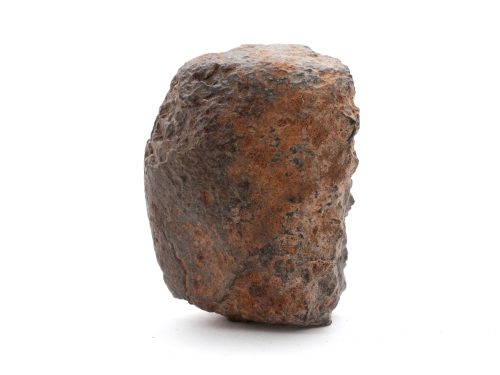
NWA 869 114.2g
$228.00 Add to cart -
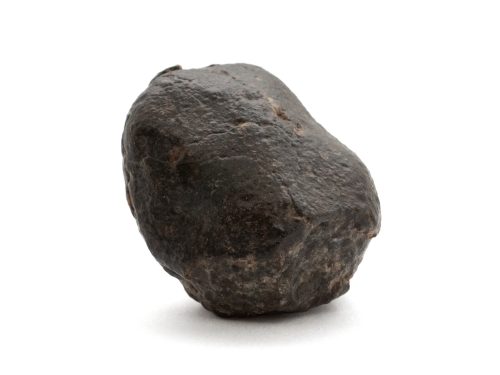
NWA 869 22.8g
$46.00 Add to cart -
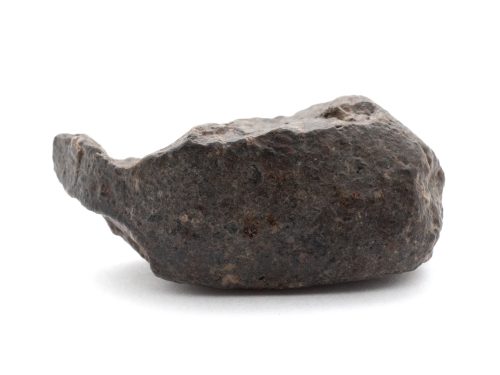
NWA 869 23.8g
$48.00 Add to cart -
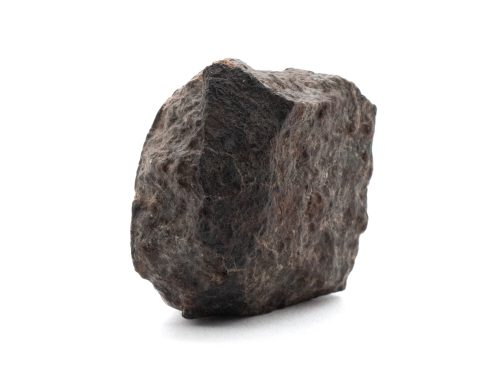
NWA 869 27.5g
$55.00 Add to cart -
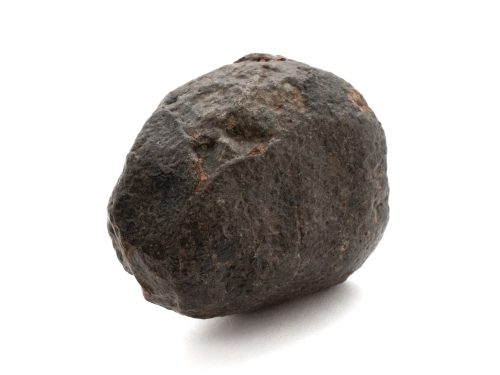
NWA 869 27.9g
$56.00 Add to cart -
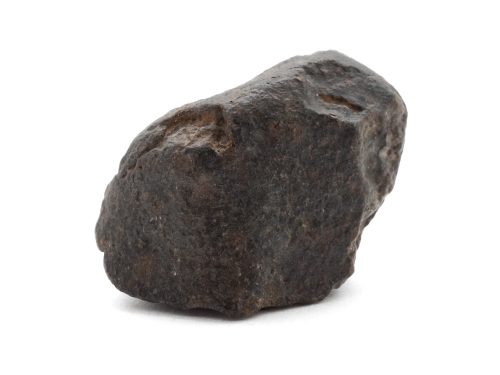
NWA 869 29.5g
$59.00 Add to cart -
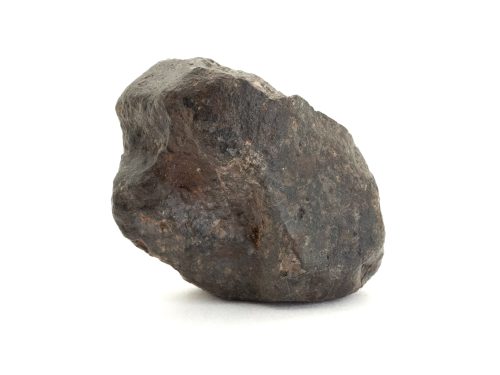
NWA 869 33.2g
$66.00 Add to cart -
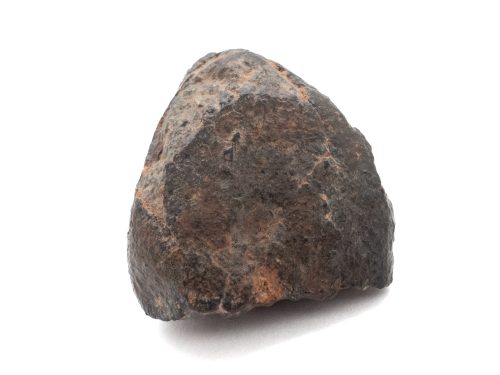
NWA 869 38.8g
$78.00 Add to cart -
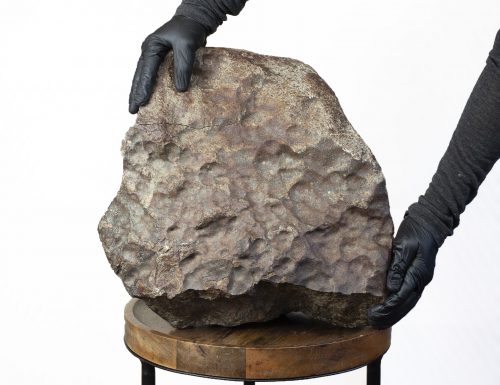
NWA 869 60.4kg
$41,995.00 Add to cart
NWA XXX End Cuts
NWA XXX Individuals
-

Northwest Africa XXX 303.6g
$595.00 Add to cart -

NWA XXX 1158.7g
$869.00 Add to cart -

NWA XXX 1575.1g
$1,181.00 Add to cart -
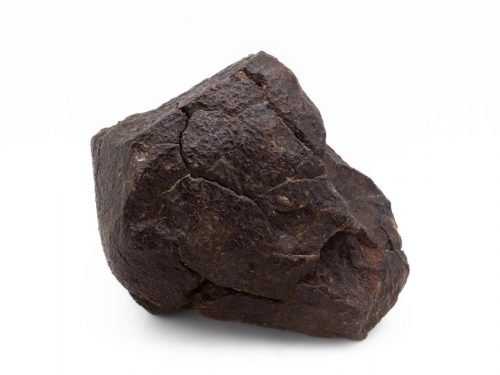
NWA XXX 2760.1g
$2,070.00 Add to cart -
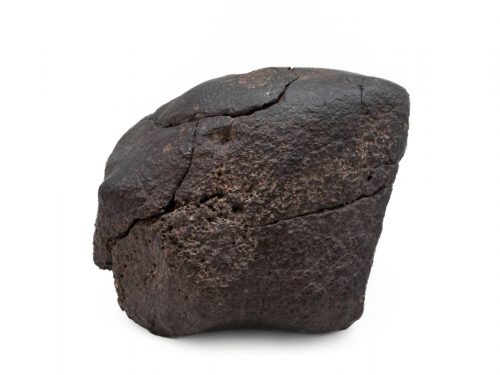
NWA XXX 3780.1g
$2,835.00 Add to cart -

NWA XXX 5.8kg
$3,190.00 Add to cart -
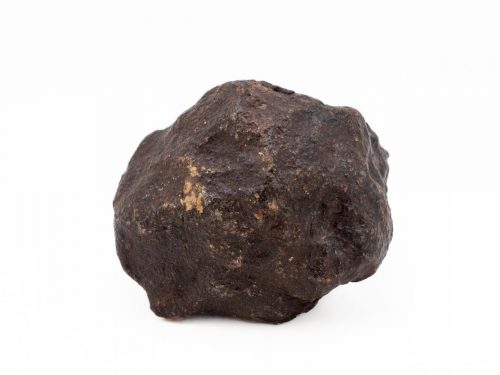
NWA XXX 500.1g
$450.00 Add to cart -

Oriented Chondrite Meteorite Puzzle 2,929.0g
$5,955.00 Add to cart
Achondrite, Angrite Found in July, 2023 north of Tindouf, Algeria
Rafsa 005 was found near Tindouf, Algeria. This area is largely desert, with extremely hot summers and warm winters. During the Sand War, this area became the site of battles between Algerian and Moroccan forces trying to claim western Algeria.
The Rafsa 005 meteorite comes from this region. Stones totaling 2,027 grams were discovered. Scientists at the University of New Mexico studying one of these stones remarked that it has, "An oriented shape a with a wind-ablated exterior. The cut face shows dark red silicates and small metal grains with a protogranular texture."
They have been classified as an angrite—these are stone meteorites that do not contain chondrules, known as achondrites. The angrites specifically are named after the Angra dos Reis meteorite that fell in 1869. They fall into two groups: plutonic and volcanic.
Rafsa 005 is of the plutonic variety, and the parent body these meteorites come from is still unknown. It was once speculated that they came from Mercury, but data collected by the MESSENGER spacecraft has cast significant doubt on these claims. The plutonic angrites are igneous rocks, meaning that they formed when molten rock cooled and solidified. This leads to thought that the plutonic angrites likely formed deep within the parent body, which scientists estimate accredited within the first million years of our solar system’s evolution.
The parent body these meteorites may have come from differentiated—formed a core, mantle, and crust—via a process of melting and crystallization of igneous rocks. This likely happened within the 2 million years after the first solids formed, about 4.57 million years ago. This means that angrites are the oldest known igneous rocks, and recorded important information about our early solar system, differentiation, and melting.
The other interesting discovery scientists made was that nearly half of the kamacite in the meteorite had been altered to iron oxide. Looking closely at the interior of Rafsa 005, thin veins of iron oxide can be observed.
-

Tassédet 004 125.3g
$501.00 Add to cart -

Tassédet 004 132.9g
$532.00 Add to cart -

Tassédet 004 194.2g
$777.00 Add to cart -

Tassédet 004 49.0g
$196.00 Add to cart -

Tassédet 004 69.2g
$277.00 Add to cart -

Tassédet 004 72.0g
$288.00 Add to cart -

Tassédet 004 72.8g
$291.00 Add to cart -

Tassédet 004 73.9g
$296.00 Add to cart -

Tassédet 004 35.2g
$245.00 Add to cart
